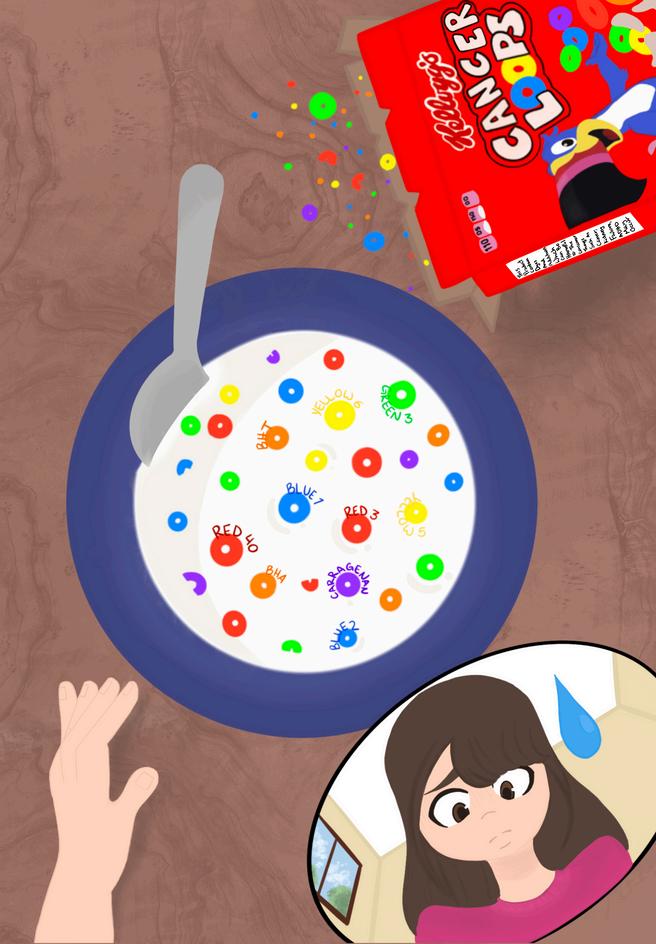"The Voice" of Sacred Hearts Academy | Honolulu, Hawaii
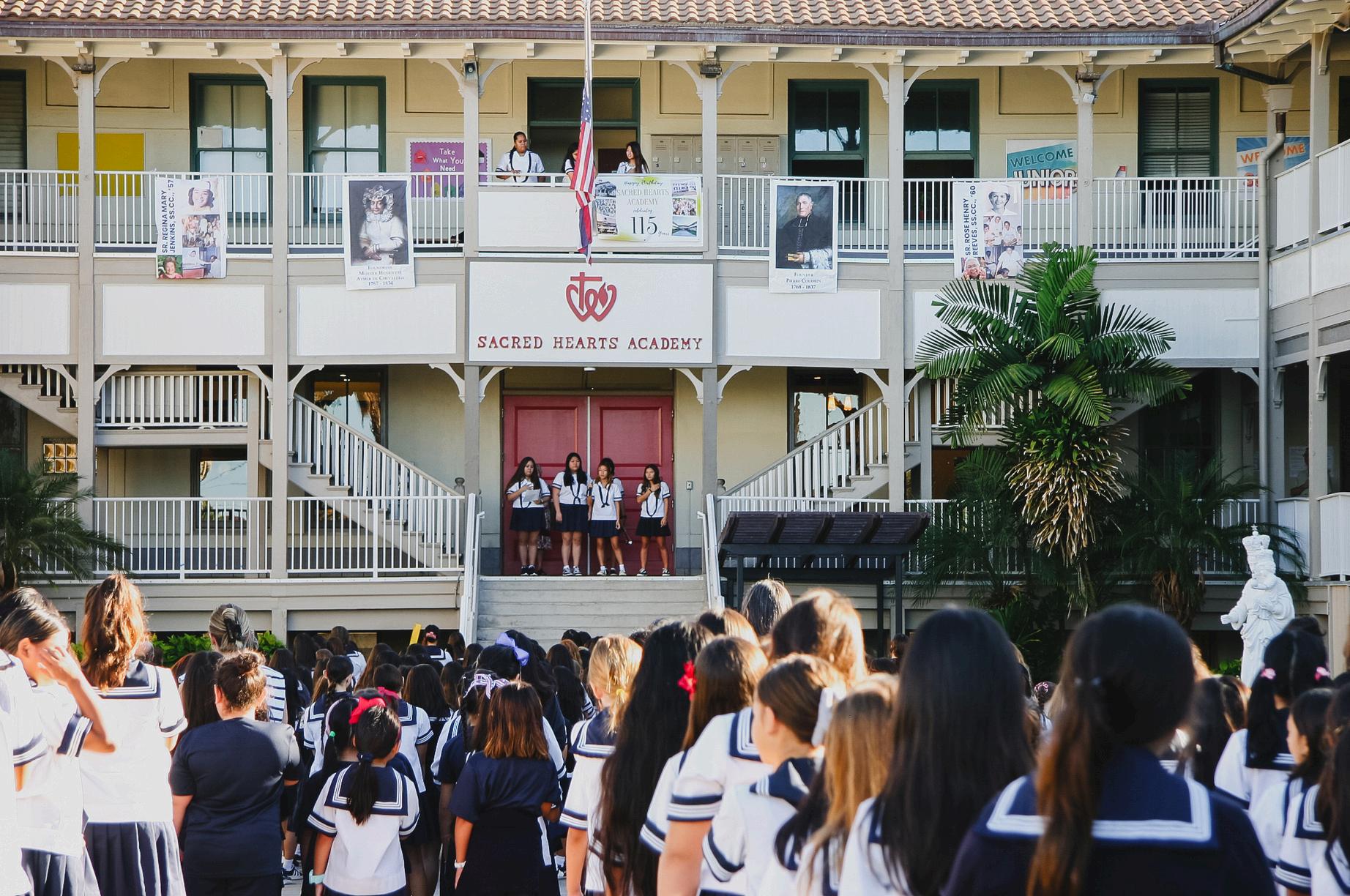

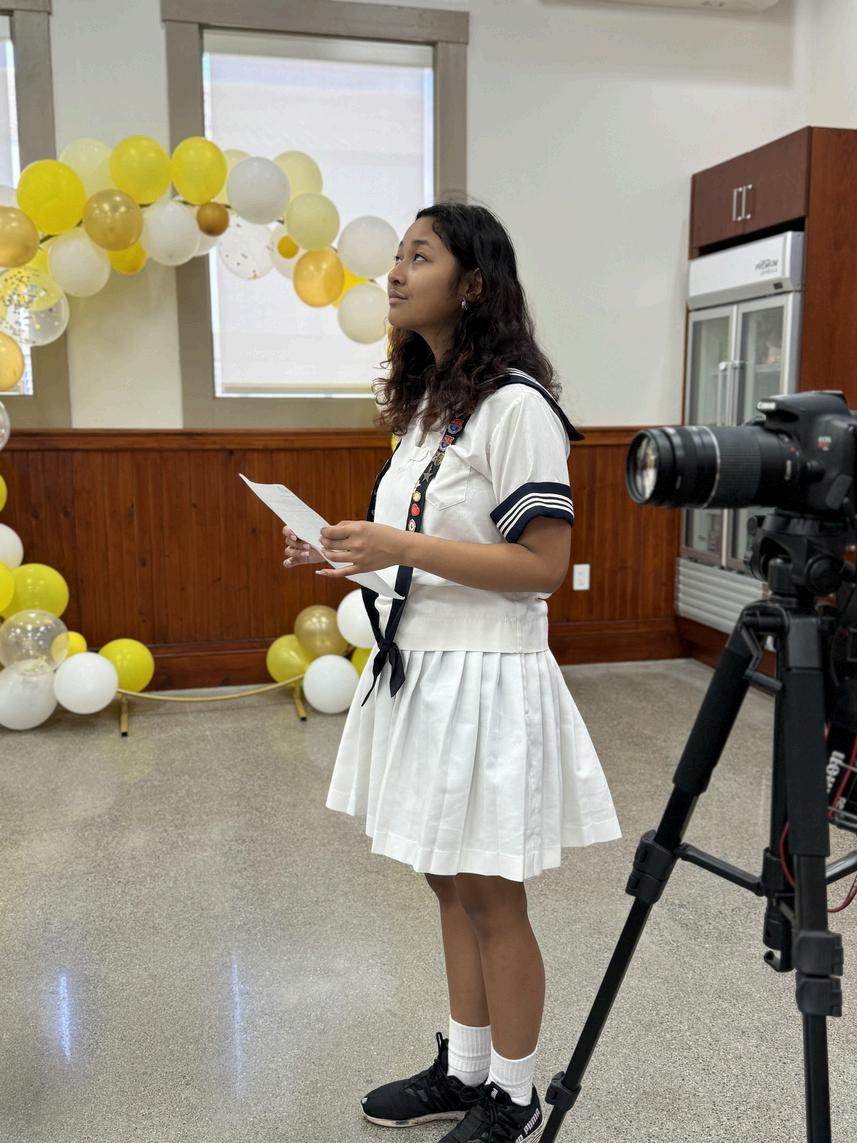
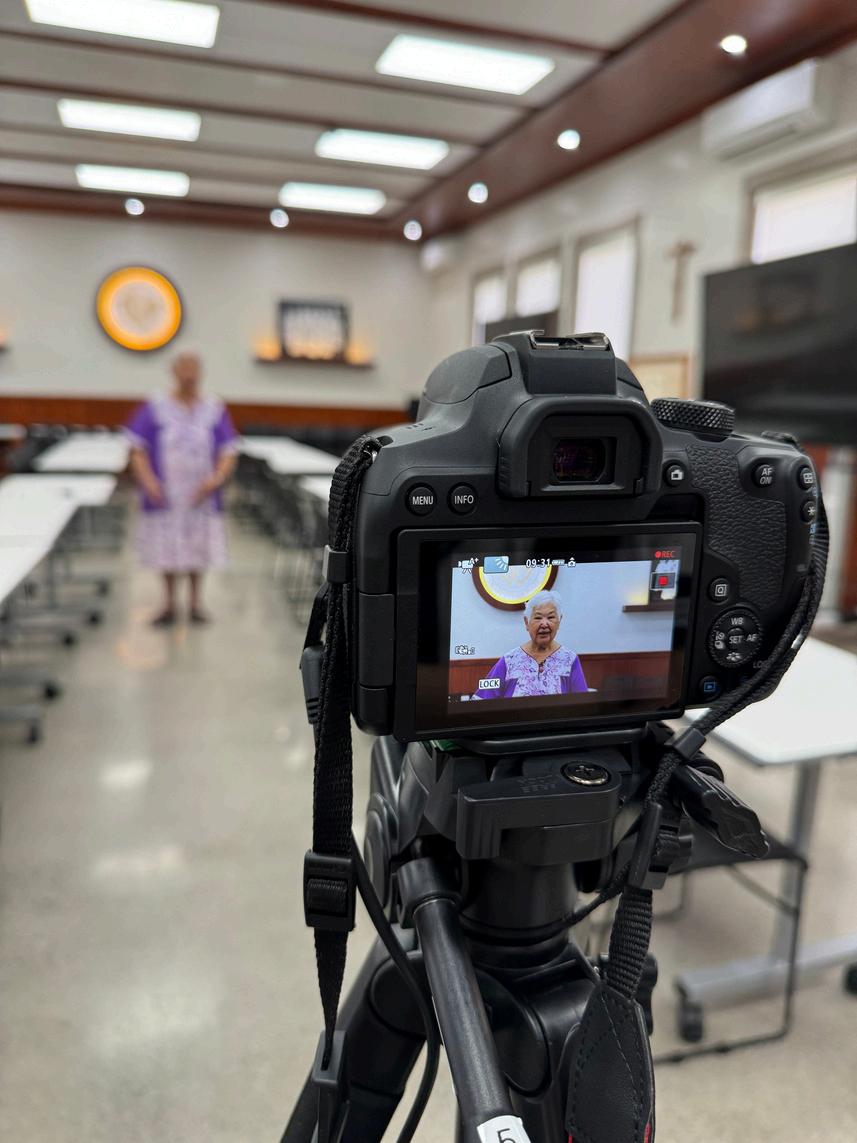

"The Voice" of Sacred Hearts Academy | Honolulu, Hawaii




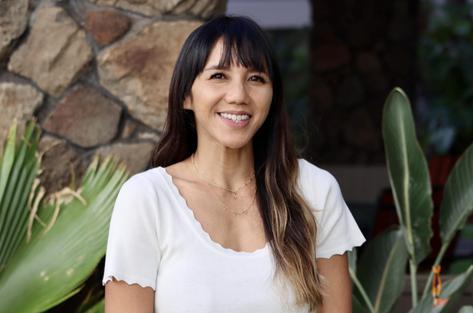
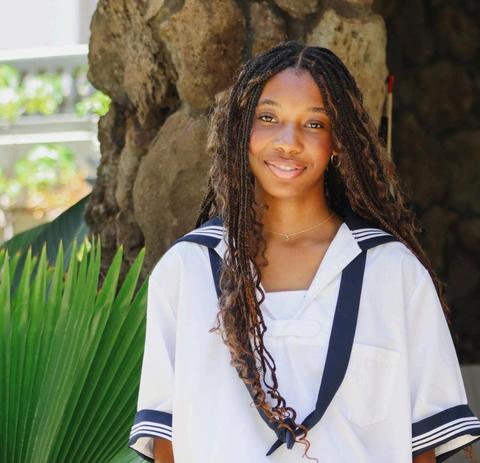

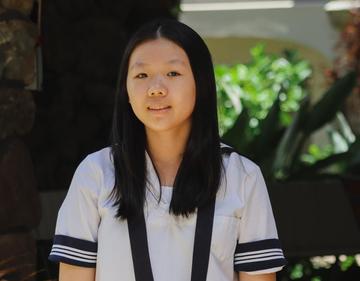
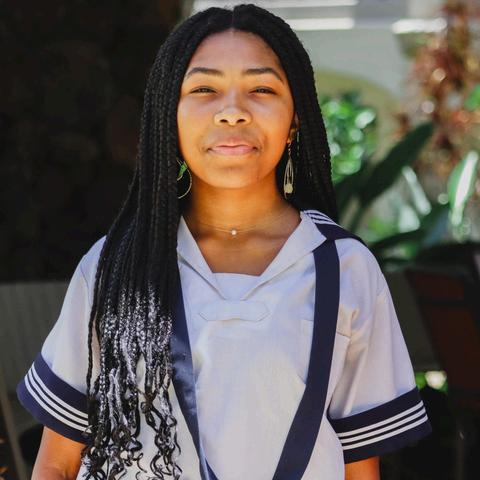
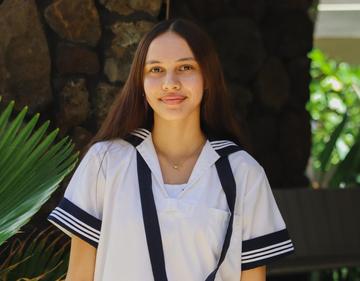
Mrs. Myers has been the Academy’s Journalism teacher for almost a decade. She also teaches Video Productions and English 9. Before teaching, she worked at local news publications and often freelanced for print publications. In her free time, she enjoys surfing, shopping, and coffee shop hopping. One fun fact about Mrs. Myers is that she was an editor for Kamehameha’s high school newspaper during her senior year!
Asa is a first-year Journalism student and a sophomore at the Academy. In being a student reporter, she hopes to learn about how to conduct herself in a journalistic setting. She hopes to get an introduction into what goes into writing articles. In her free time, Asa reads, crafts and enjoys playing sports. One fun fact about Asa is that she was raised in Indiana.
Aeris is a first-year Journalism student and a junior at the Academy. This year, she hopes to improve her writing skills and her social skills. During her free time, she likes to read and play video games. One fun fact about Aeris is that she has participated in band for four years.
Kyrie is a first-year Journalism student and a sophomore at the Academy. Kyrie hopes to learn teamwork and communication. In Kyrie’s free time, Kyrie likes to hang out with friends and eat. One fun fact about Kyrie is that she’s never broken a bone.
Alyssah is a first-year Journalism student and a senior at the Academy. She hopes to strengthen her writing skills and expand her knowledge on the community around her. In her free time, she spends quality time with her friends and family.
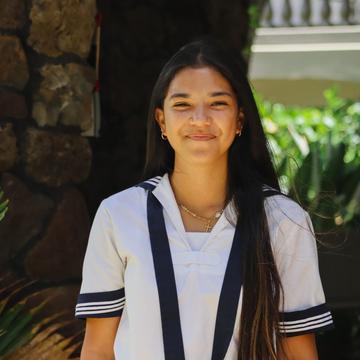
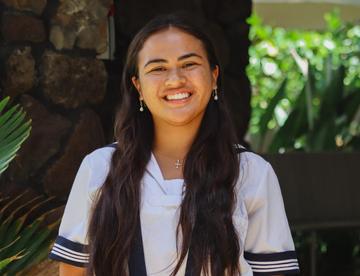
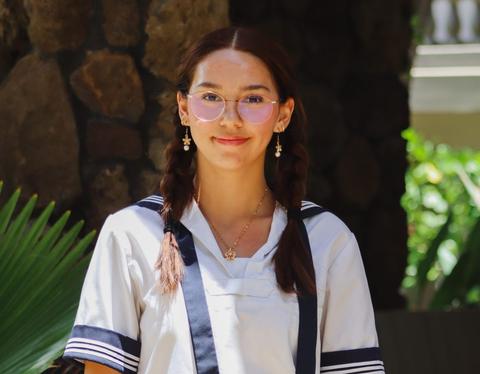

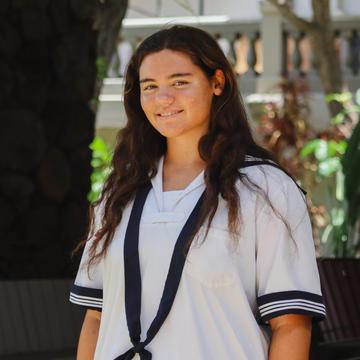
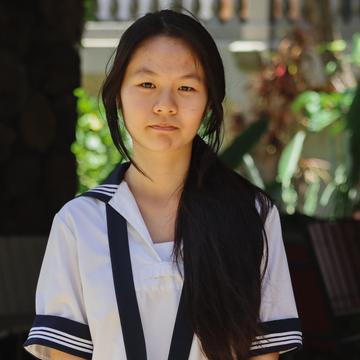
Joy is a first-year Journalism student and is a sophomore at the Academy. This year she hopes to strengthen her skills in writing and learn about the process that goes into making and writing an article. Joy enjoys going to the beach and spending time with friends in her free time. A fun fact about Joy is that she loves to play sports and be outside.
Corilee is a first-year Journalism student and a senior at the Academy. This year she hopes to be more involved in the school community and to strengthen her skills in communication and writing newspaper articles about different sports. Corilee enjoys spending time with her family and shopping in her free time.
Samaya is a first-year Journalism student and a senior at the Academy. She hopes to learn about the experience of being a journalist and how to better use a camera. Something she does in her free time is perform musicals with Mo’olelo Studios at Mamiya Theater!
Taylor is a first-year Journalism student and a junior at the Academy. She hopes to learn about the process of writing articles. Taylor enjoys going to the beach, going out with friends and family and training. A fun fact about Taylor is that she’s been at the Academy since Senior Kindergarten.
Sara is a first-year Journalism student and a junior at the Academy. This year, she is hoping to improve her writing skills and make connections with her peers. In her free time, you will either see her at the beach surfing or in the pool swimming. One fun fact about her is that she is a certified lifeguard.
Ann is a first-year Journalism student and a sophomore at the Academy. Her hope for this year is to improve her writing skills and establish connections with others in the community. She likes to crochet and read during her free time. One fun fact about Ann is that her favorite music genre is R&B.
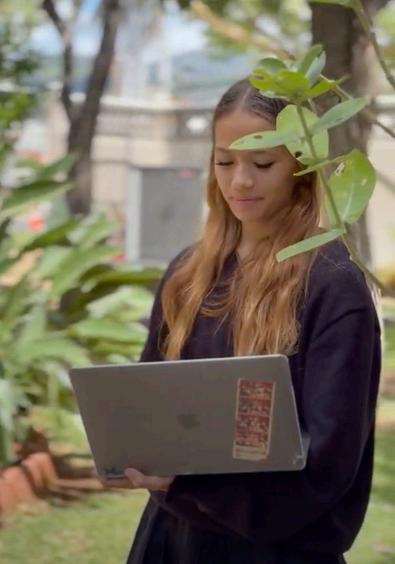
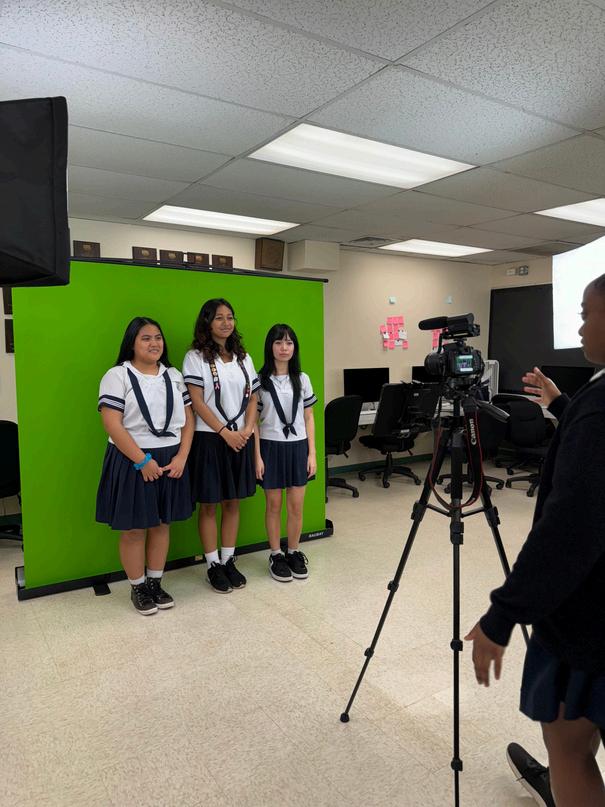
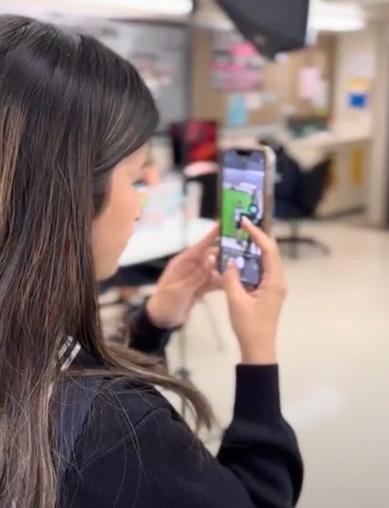

Dylen is a first-year Journalism student and a sophomore at the Academy. This year, she hopes to expand her knowledge in writing, as well as deepen her understanding of storytelling. She enjoys dancing hula and spending time with friends at the beach. A fun fact about her is that she has been attending the Academy since preschool.
Eve is a first-year Journalism student and a senior at the Academy. She aspires to increase her knowledge in camera usage and to be able to portray others emotions clearly through imagery and writing. A hobby that she enjoys is playing the electric guitar. One fun fact about Eve is that she has been collecting old cameras
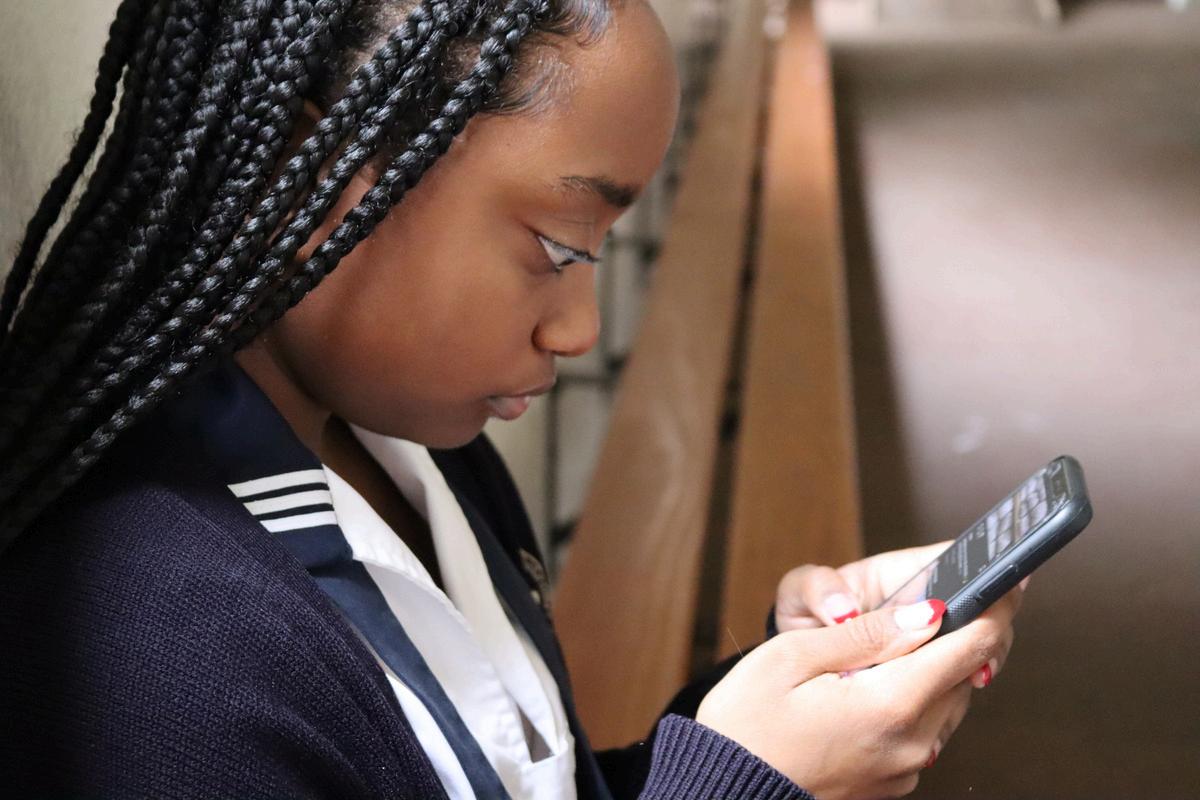
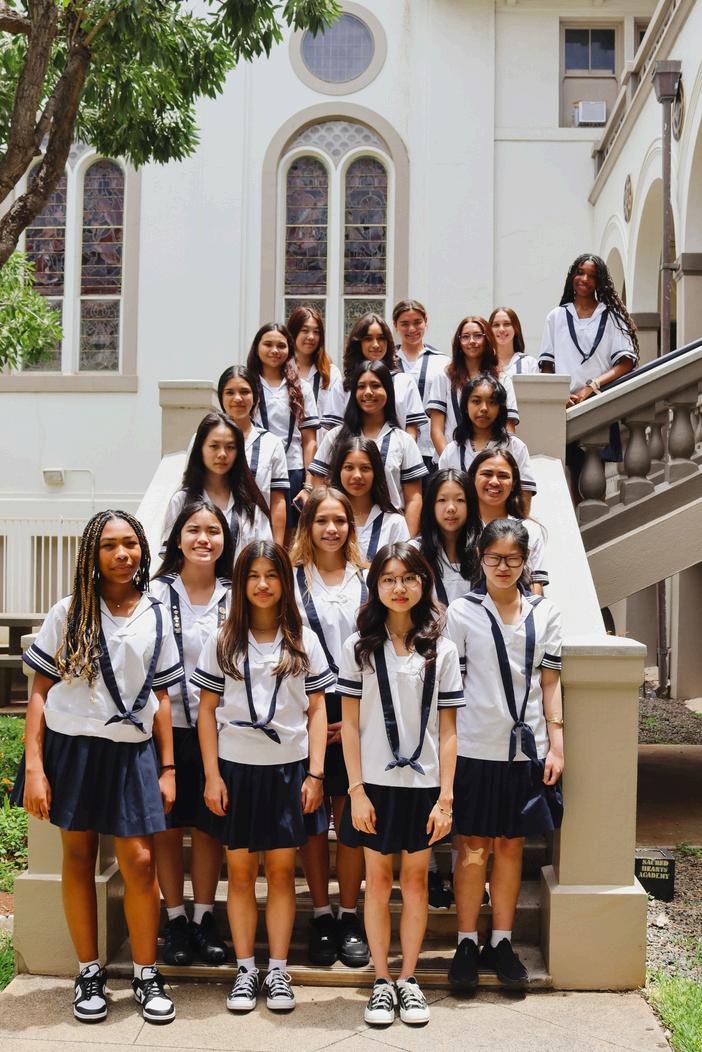

Ayla is a first-year journalism student and a senior at the Academy. As a student reporter, she hopes to make connections with students. While participating in journalism, Ayla hopes to discover current events and increase her technical skills. She enjoys cheerleading and going to the beach.


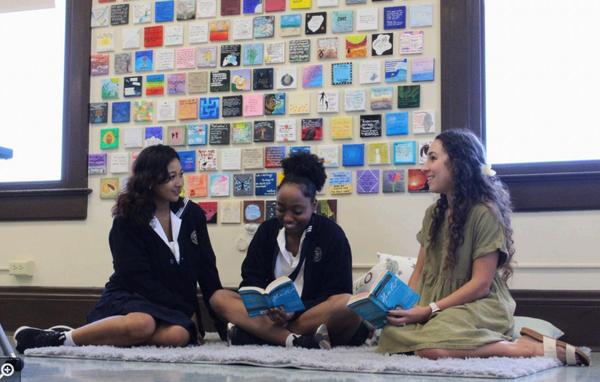
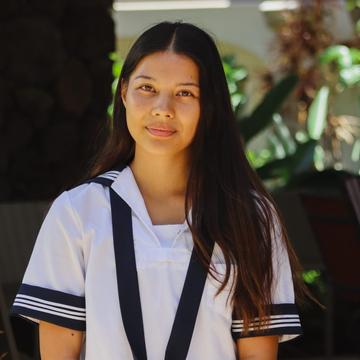
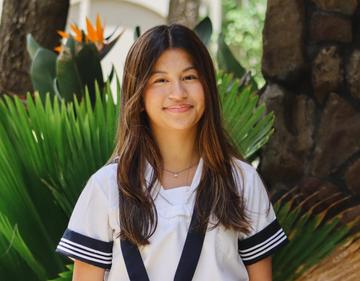
Liana is a first-year Journalism student and a junior at the Academy. She hopes to learn about various skills used in Journalism. Some of her favorite things to do are getting her nails done and going shopping. One fun fact about Liana is that she is fluent in Korean.
Chloe is a first-year Journalism student and a sophomore at the Academy. She’s looking forward to getting to learn through others experiences, as well as making close relationships. During her spare time, she loves crocheting and watching movies. A fun fact about Chloe is that she was born in Germany!
Anna is a third-year Journalism student and a senior at the Academy. She is also the Social Media Editor. This year, as a student reporter, she hopes to learn more about all different types of media. In her free time, you can find Anna listening to podcasts, reading and crocheting.
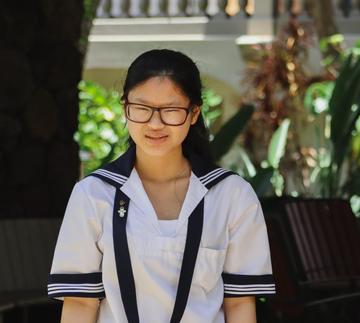


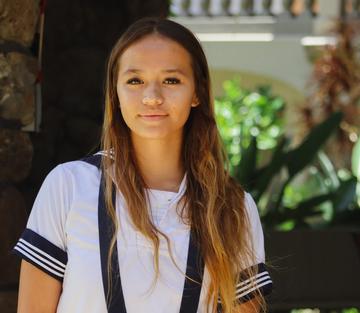

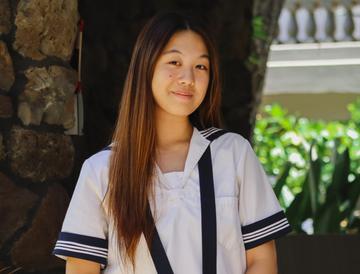
Katie is a second-year journalism student and a junior at the Academy. She is also the Copyeditor. Throughout this year, Katie is destined to learn more about different writing styles, meet important people and write more. Katie likes to write, draw and learn new languages.
Bailey Leong is a second-year Journalism student and a junior at the Academy. She is also the News Editor and Media Editor. Bailey hopes to further develop her vocabulary, while writing, and also hopes to improve her socialization skills, while talking to others both inside and outside of Journalism.
Mahina is a third-year Journalism student and a senior at the Academy. She is also the Sports Editor. In this year of Journalism, she hopes to strengthen her writing skills and make meaningful connections with pure intentions. In her free time, she enjoys paddling.
Keira is a third-year Journalism student and a junior at the Academy. She is also the Features Editor. She hopes that she can use her love of writing to inform others on important topics. Keira believes that in Journalism, if you work hard and be kind to everyone you encounter, you’ll be rewarded with opportunities.
Danielle is a third-year Journalism student and a senior at the Academy. She is also the Entertainment Editor. Danielle hopes to learn how to write creative stories and improve her writing skills. She loves to travel and explore new places.
Bailey Leong, News Editor • Jan. 20, 2025
Yesterday, TikTok resumed operations in the United States following a voluntary 12-hour shutdown, which began just hours before the scheduled U.S. ban on the app took effect. The company said that President-elect Donald Trump pledged to pause the ban with an executive order on his first day in office.
TikTok issued a statement following its shutdown, “We thank President Trump for providing the necessary clarity and assurance to our service providers that they will face no penalties providing TikTok to over 170 million Americans and allowing over 7 million small businesses to thrive,” TikTok said in the statement. “It’s a strong stand for the First Amendment and against arbitrary censorship. We
will work with President Trump on a long-term solution that keeps TikTok in the United States.”
When TikTok users went on the app Saturday night, there was a notification reading, “Sorry, TikTok isn’t available right now. A law banning TikTok has been enacted in the U.S. Unfortunately, that means you can’t use TikTok for now.” It went on to say, “We are fortunate that President (Donald) Trump has indicated that he will work with us on a solution to reinstate TikTok once he takes office. Please stay tuned!”
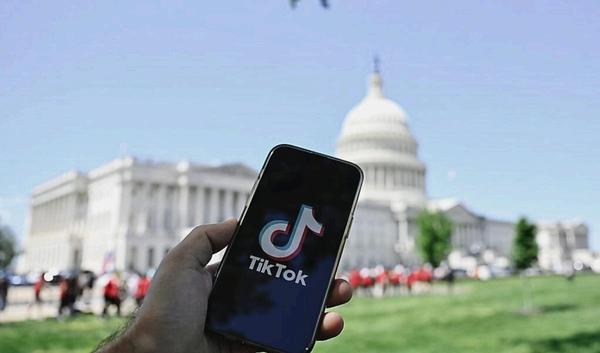
A phone displaying the app TikTok in front of the United States Capitol. The parent company of the popular video sharing platform, ByteDance, temporarily shutdown the app before resuming operations yesterday.
according to NPR. While the app remained on users’ devices, it would have eventually ceased functioning entirely without the necessary app updates.
“I was very sad when I saw that I was no longer able to use TikTok, then shortly after, super happy that I could use it again,” said Wheeler, who has been using the app for
At that time, TikTok was removed from app stores, preventing new downloads. Companies would be penalized for distributing or updating the app, Continued on Page 6
about a decade. “I thought it was weird they placed a ban and made a big deal about it, then changed it suddenly.” The legal battle surrounding TikTok has been ongoing for months. In April, Congress passed legislation banning the video-sharing platform due to national security
concerns. Lawmakers required TikTok’s Chinabased parent company, ByteDance, to sell the app to a government-approved buyer by Jan. 19 to avoid the ban. Since ByteDance failed to meet this deadline, the ban took effect.
In the weeks leading up to the ban, the Supreme Court heard arguments from both sides. According to the Times, lawyers for TikTok argued that the mandate violates their users’ First Amendment right to free speech, while the U.S. government argued that TikTok represented a “grave threat to national security” and was a tool of espionage for Beijing. But according to NPR, the Supreme Court upheld the ban and ruled unanimously that “divestiture was necessary” to resolve lawmakers’ fears about China, and that Congress acted lawfully when voting to crack down on the app.
Academy senior Anna Casupang has used TikTok since the sixth grade, accumulating numerous videos over the years that she’s created and saved.
“The videos I have from then to now are so much that I wouldn’t be able to save them all,” she said. “For me, losing the platform also means losing some of those memories.”
The uncertainty surrounding TikTok’s fate has also drawn strong reactions from various groups. Several teenagers, particularly students, have shared negative sentiments about the possible loss of the app, which many have used for years.
support of the platform. They wrote that TikTok was instrumental to advocacy around several issues, such as reproductive rights and opposition to anti-lesbian, gay, bisexual, transgender and queer (LGBTQ+) legislation around the country.
Small business owners, who rely on TikTok as a marketing tool, have also
been frustrated by the uncertainty surrounding the ban. According to AP News, Cafe Emporos founder Ruben Trujillo said that using TikTok and going viral helped to market his Coffeegrams, greeting cards that come with coffee, tea or hot chocolate.
Continued on Page 7
For some, this TikTok ban doesn’t just mean the loss of content but also the loss of connection and community. According to AP News, in June, a dozen racial and social groups, including the Asian American Foundation, the Hispanic Heritage Foundation, the Calos Coalition and the Muslim Public Affairs Council submitted a legal brief in
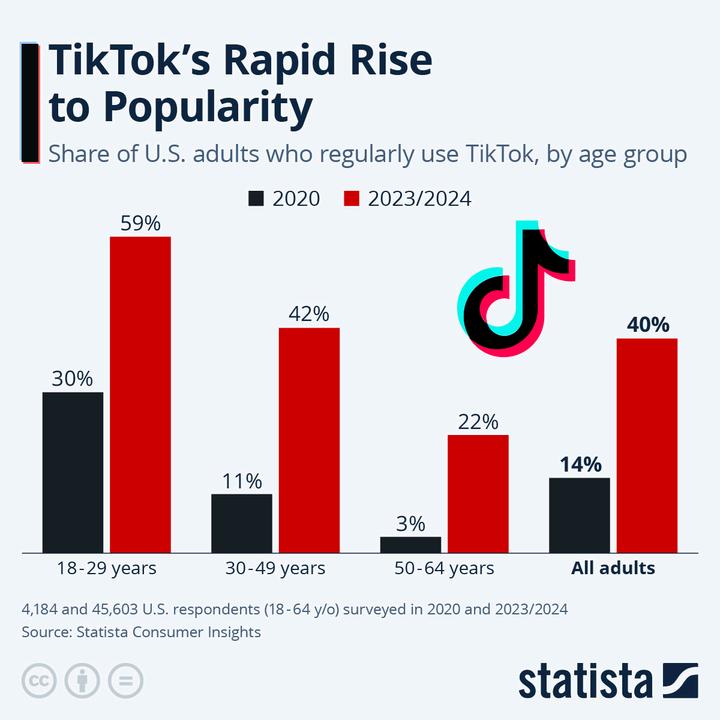
Data showing TikTok’s rising popularity with U.S. adults. In all age ranges, more adults used the social media platform during 2023-2024.
“It’s kind of like they keep putting the ball in each other’s court, but who’s going to make the decision?” he said in the article. He went on to say small business owners are told to “be creative, pull yourself up by the bootstraps…and a lot of people did that, and it’s like those bootstraps are being cut now.”
TikTok first debuted as Musical.ly in 2014, and, according to Pew Research Center, the majority of the app’s users are teenagers
“I use TikTok for recipes, current news updates, book and movie recommendations and exploring new music,” Casupang said. “I find the app useful because…the information I am trying to find is accessible. I also use TikTok as a way to destress, especially when school gets stressful.”.
Search for alternatives
As the debate over TikTok continues, some users are looking for alternatives. Lemon8, a lifestyle-
focused social media app owned by ByteDance, has gained attention as a potential substitute. Another option that has recently seen a surge in interest is RedNote, a Chinese social media platform considered by some to be a TikTok competitor.
However, the New York Times states that Lemon8’s and RedNote’s origins may cause them to be subject to the same law as TikTok. In this scenario, TikTok users would be limited to other social media platforms, including Instagram and YouTube, which added similar features as TikTok to compete with them, such as Instagram Reels and YouTube Shorts.
In the absence of TikTok, these apps’ features and availability would benefit from the ban as users would flock to them, causing these and other platforms’ popularity to skyrocket.
Sacred Hearts Academy senior Keira Wheeler says, “TikTok is not like any other social media app out there. TikTok is a fun entertainment and discovery platform, while the other apps are centered around social networking.”
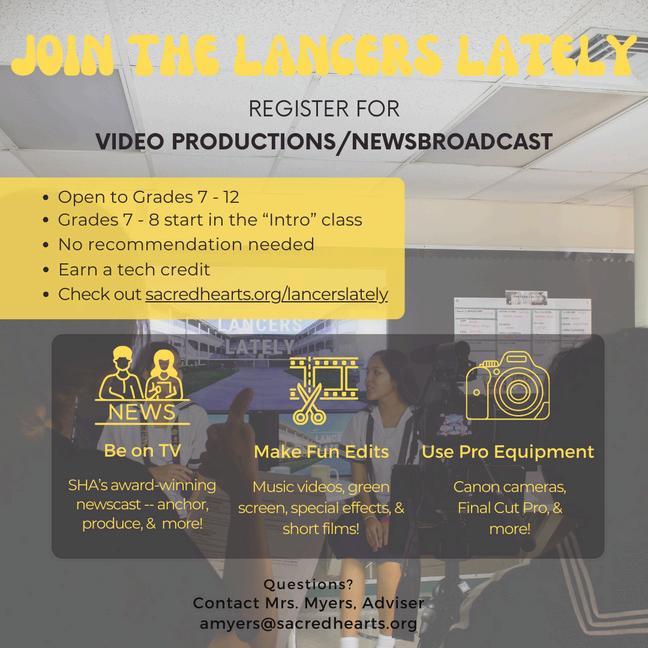
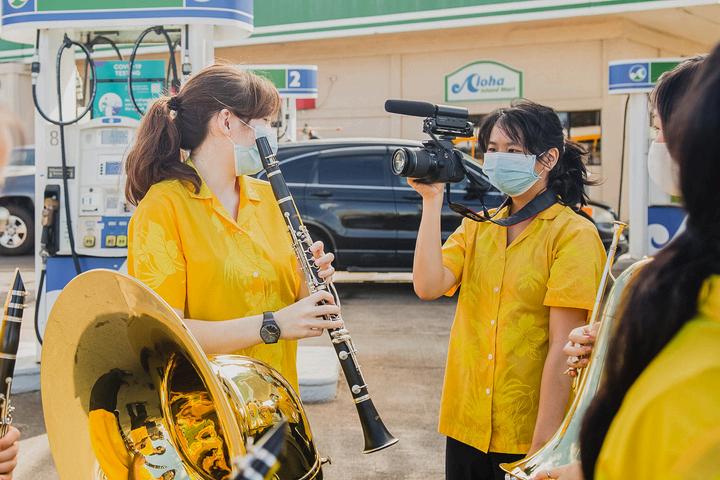
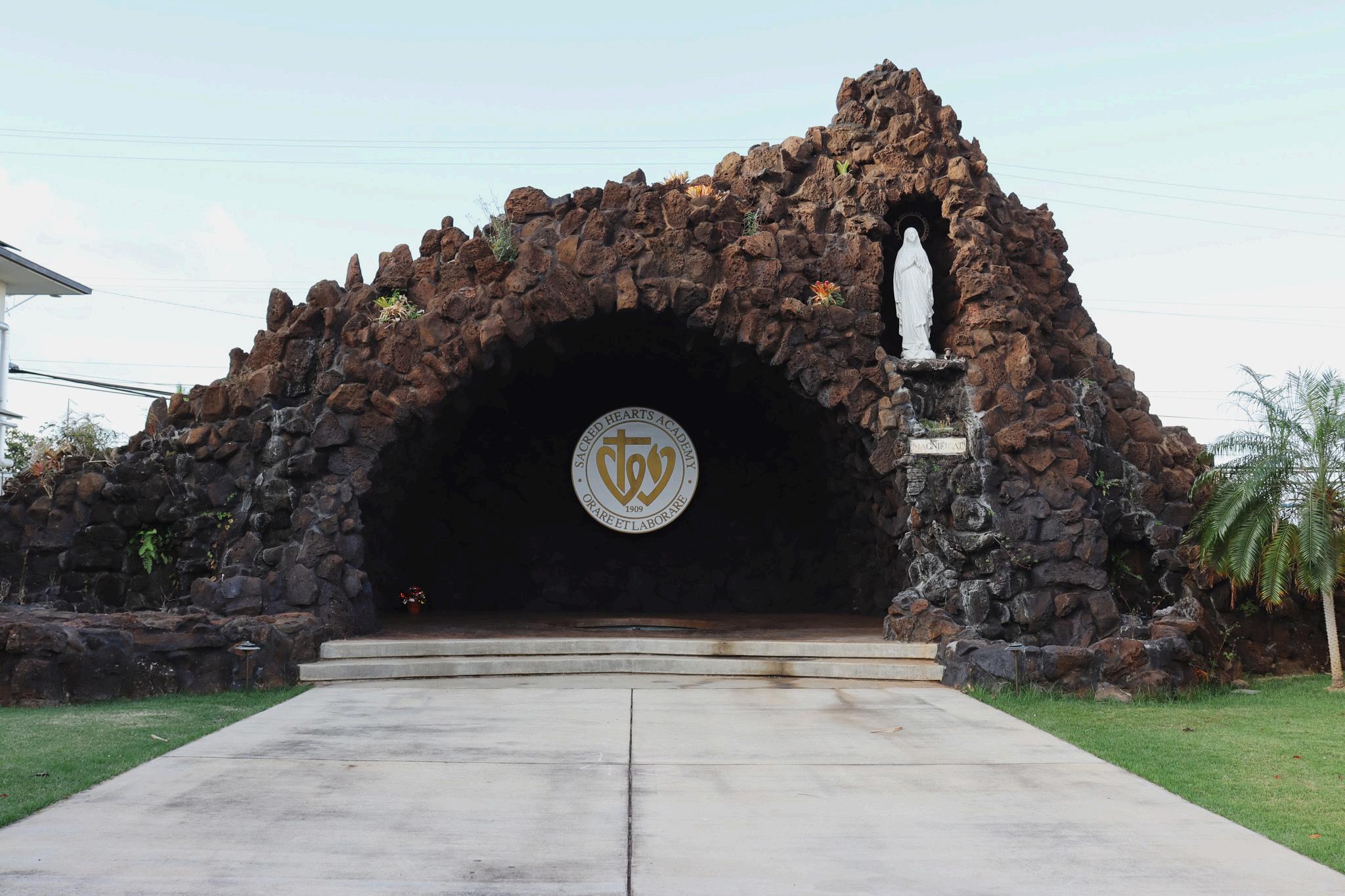


Katie Kaoihana,
Copy Editor • Nov. 14, 2024
For the first time, Sacred Hearts Academy hosted a living rosary on its Kaimuki campus, bringing together approximately 500 lower and upper school students, faculty and staff for a significant religious occasion. This event last week aimed to unite the school community in prayer and reflection, fostering a deeper connection to the school’s Catholic faith-based values.
“We wanted to gather the entire school together to pray to Our Lady (Mother Mary),” said Head of Campus Ministry Sister Katherine Francis Miller, referring to the woman Christians and Catholics
believe gave birth to Jesus. “(We also did this so) that Jesus would grant us peace in our world.”
During the living rosary, students sat facing the Grotto of Our Lady of Lourdes, a replica of a shrine in France. Each student represented a bead in the rosary, which is a traditional string of beads or knots used by Catholics for prayer. Catholic tradition says Saint Dominic received the rosary from the Virgin Mary and promoted it to fight heresy. However, it likely developed from older prayer bead traditions.
During the event, students took turns reading a set of prayers into a microphone, with the crowd repeating
each prayer in unison. The rosary is traditionally completed by reciting several Catholic prayers, including the Apostles’ Creed, Our Father, Hail Mary, Glory Be and, on some occasions, the Fatima prayer.
The purpose of the living rosary, according to St. Mary’s Roman Catholic Church, is to unite parishes, communities and groups in asking Our Lady to bring faith, peace and love, emphasizing that “The more people that pray, the stronger the voice.”
Senior Anna Casupang, a member of the school’s worship team, shared her personal reflection on the event.
Continued on Page 9







Sacred Hearts Academy hosted its first-ever living rosary last month. In front of the grotto, students prepare for their moment to read their prayer for this religious gathering.
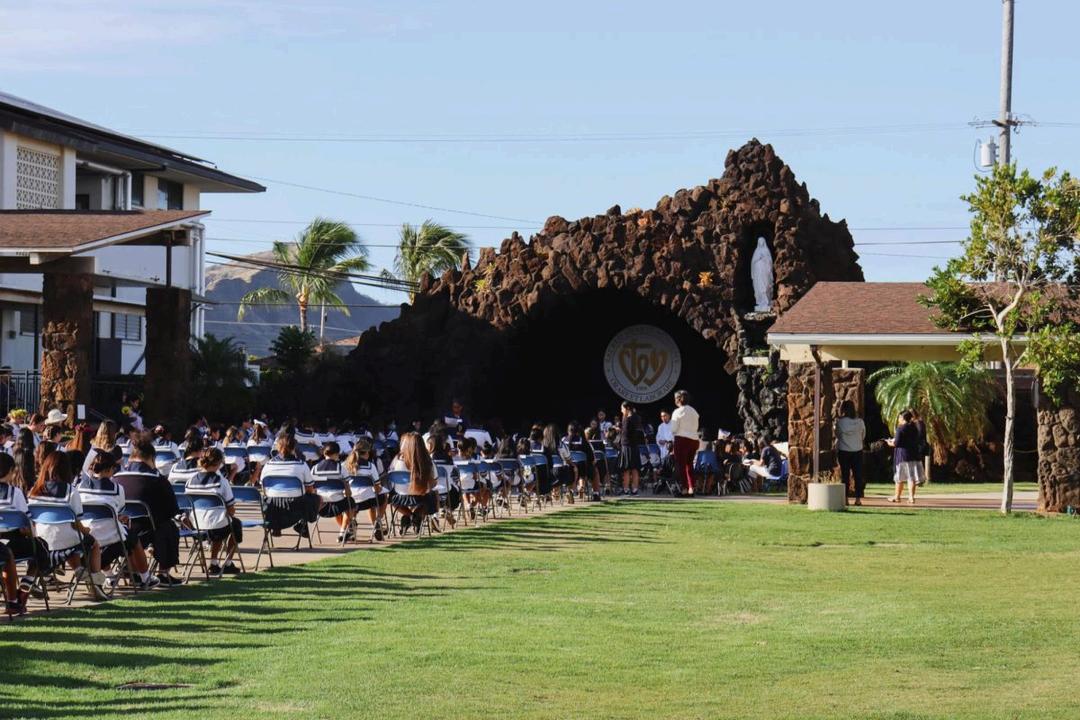
“Praying in a setting where I am surrounded by others was different for me,” she said. “Typically, I pray by myself in a secluded space; however, I did enjoy being able to share this experience with everyone and experience a different form of prayer.”
As the prayer concluded, Casupang continued to reflect on her experience.
“This was a really peaceful moment and one that showed me how our school community can be joined by faith.”







The worship team, called the Living In Faith Experience (L.I.F.E.) Team, played an important role in organizing the event. They assisted with the setup, made sure all the readers were in place and guided students as they brought flowers to the grotto.
In addition to the efforts of the worship team, theology teachers prepared their students by teaching them how to properly use the
This collaborative approach reinforced the theological lessons students learn throughout the school year, aligning with the school’s mission to educate young women about Christianity.
“The event emphasized our mission as a school to proclaim the good news that Jesus, through Mary, has given us,” Miller said. “That is, to proclaim God’s love and care for His people, that God is close to us and hears our prayers when we call to Him.”
Continued on Page 10
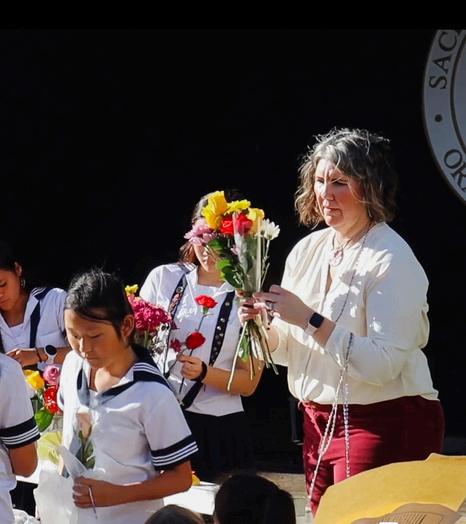
At the conclusion of the living rosary, Lower School Principal Cynthia McIntyre distributes flowers to students. They place it at the Our Lady statue.












Like any large event, the living rosary presented challenges, coordinators say. Lower School Principal Cynthia McIntyre emphasized the importance of planning and preparation, noting, “You must plan ahead, and if it’s an outdoor event, you need a backup plan in case of bad weather.”
The school faced issues with sound and the bright sunlight. Staff members worked to adjust speaker volume and address microphone feedback and
malfunctions. The sun’s position also affected some students, who struggled with the brightness. Many attempted to shield their eyes with their hands.
Despite these challenges, the school community handled them with patience and teamwork, Miller said.

“The challenges were met by people being willing to be involved and carrying out their assigned tasks to the best of their ability, being patient and kind in working together as a team,” she said.
"Our younger students learn by making connections to their own lives and experiences."




- Cynthia McIntyre, Lower School Principal




One of the highlights of the event was its ability to engage younger students, fostering a sense of connection between the school’s lower and upper school communities. McIntyre believes that such events allow younger students to bond with their older peers, helping them feel like an integral part of the school community.
“Our younger students learn by making connections to their own lives and experiences,” McIntyre said. “When their ‘big sisters’ are involved,
they feel like part of something important. We hope these experiences inspire curiosity and a love for learning.”
Casupang also observed the younger students’ engagement during the event.
“Sitting in the front for the event, I was able to observe the younger students,” she said. “They were very attentive throughout the event, trying their best to pay attention and absorb what was happening.”
Continued on Page 11












Building on success


With the success of this first living rosary, Miller looks forward to hosting more of these events in the future.
“I think we could showcase the mysteries of the rosary, where students could dress up,” she said, referring to the five mysteries that center around the life of Jesus and Mary. “It would add a little more drama to the event.”
McInty opportu growth leaders
“We w another said. “W like student respons and ru further opportu leaders buildin

Continued on Page 12
WA T C H !
Reporter Karys Shimizu ‘27 captures this special event in Sacred Hearts Academy’s history. Scan or click the QR code to find out
Find more videos like this at Ka Leo's sister publication, Lancers Lately: www.sacredhearts.org/lancerslately
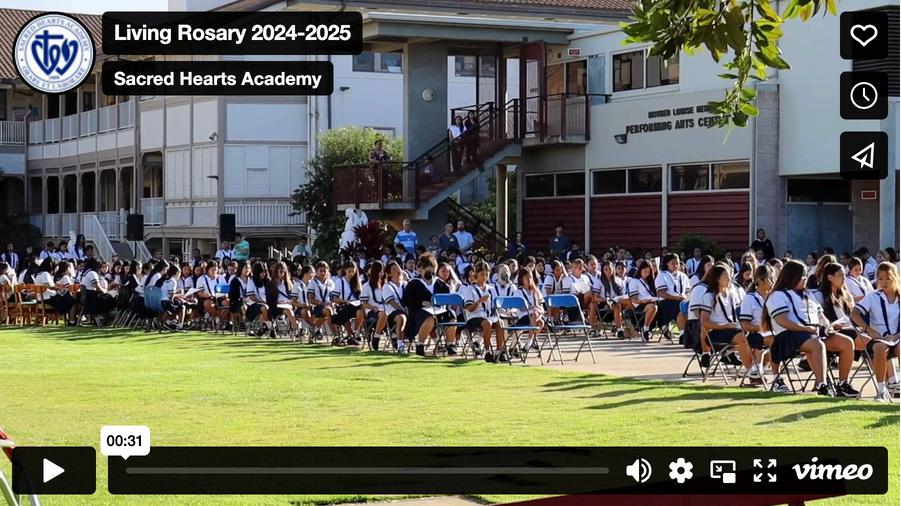













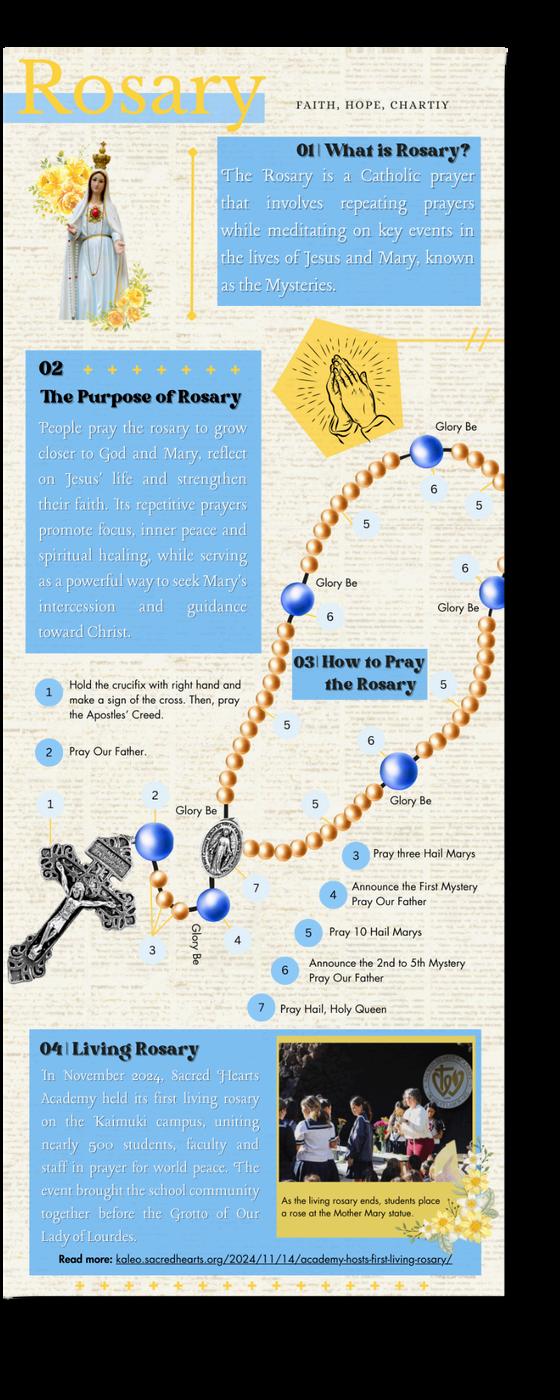






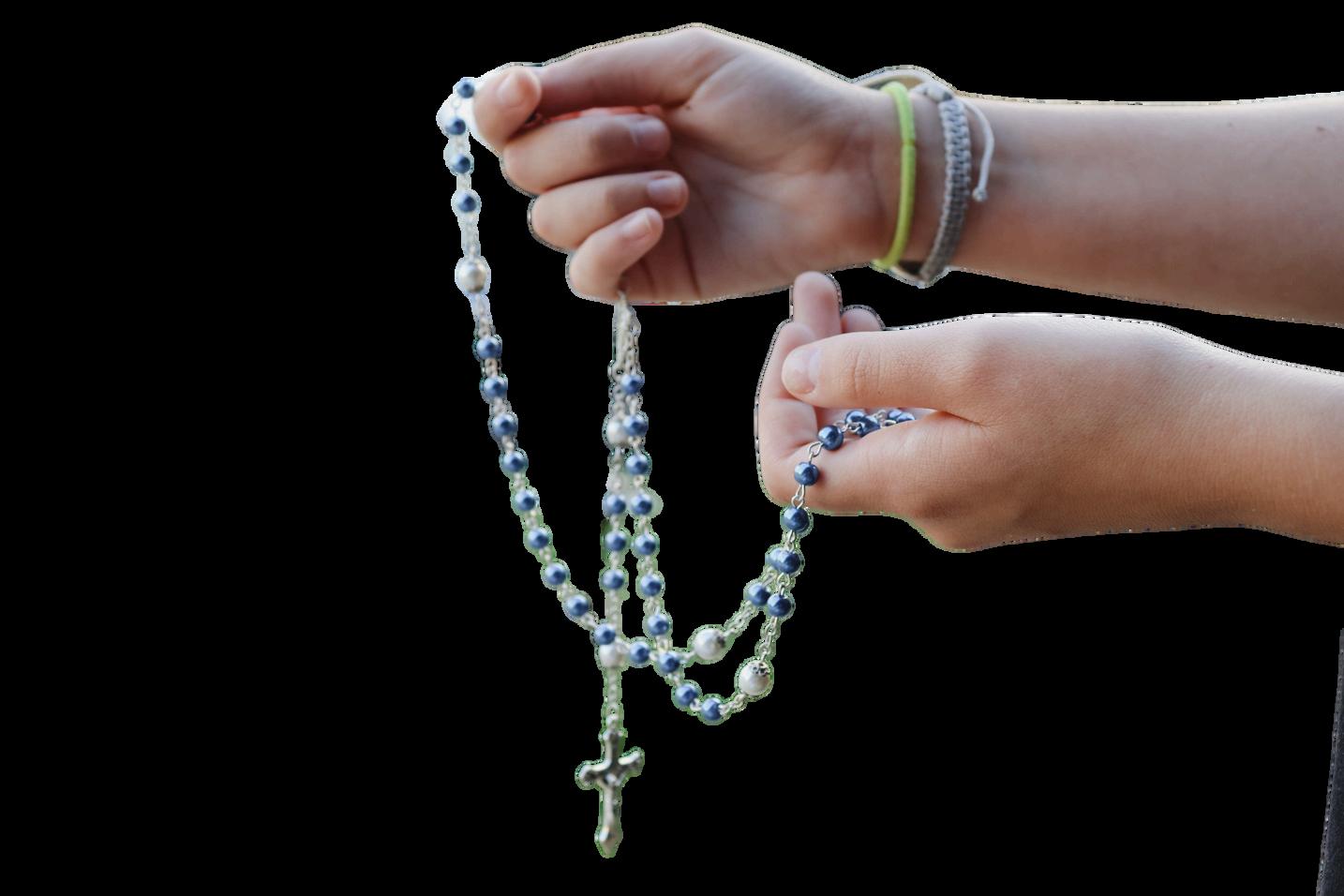
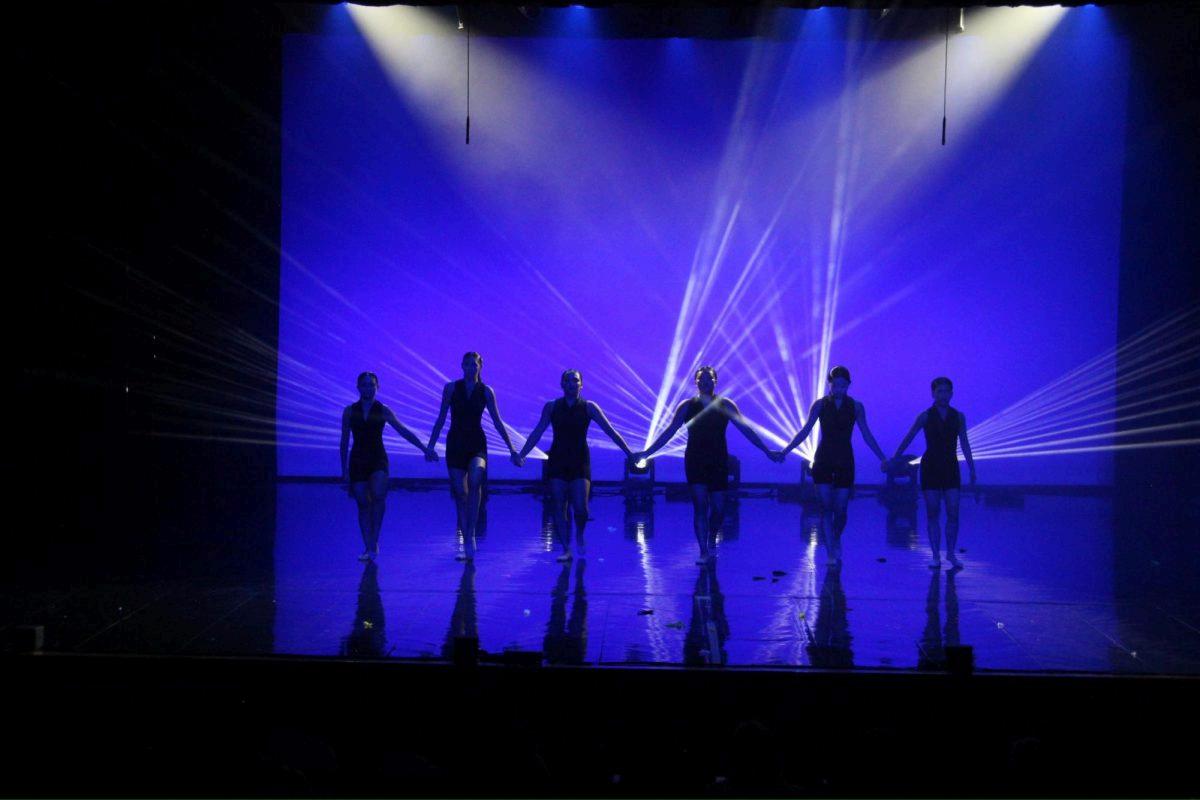
Sacred Hearts Academy senior Anna Casupang recently found her love of dancing through a new dance team created by Mo‘olelo Studios called Team Elevate.
“Dancing allows me to not only do something that I truly enjoy but also express myself. It gives me an outlet to forget about any type of stress,” said Casupang, who has been part of the team for almost a year. Casupang started dancing during her sophomore year of high school and has always had a passion for musical theater. She wanted to improve her performance on the stage since many musicals involve dancing.
The team is part of a recent expansion in
Mo‘olelo Studios’ theater operations. Mo‘olelo Studios has a history with performing arts, specifically in theater production. This dance team is unlike its previous groups and classes, which included musical theater, dance, singing and acting. It shares its dance expertise with different communities by allowing instructors of other dance techniques to join their sessions. So far, Team Elevate has had jazz lessons, tap dance lessons and many more. An experienced instructor accompanies each lesson.
Alexandria Zinov, the dance team’s coach, said her goal was to instill a deep love of dance in the team members, with hopes that their passion will boost their selfconfidence. The team has
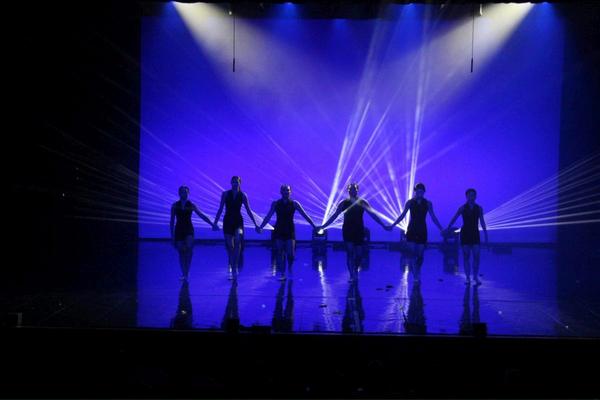
Team Elevate completes a contemporary piece at Mamiya Theater during the Fall Mo’olelo Showcase. The song they performed to was “Smash Into You” by Beyonce.
been taking various dance classes, such as jazz, jazz funk, contemporary, hip hop, musical theater, tap, femme and modern.
Many agree that Zinov is an amazing dance coach who encourages her students to stay true to themselves while on the dance floor. She believes that dance is an emotional element.
“Dance has a beautiful way of healing, inspiring and telling stories through movement,” Zinov said.
Zinov, originally from Utah, has been a dancer since she was three years
Continued on Page 14
By
Team Elevate dances a fierce feminie piece. The song they performed to was “Level Up” by Ciara, which involved technical moves.
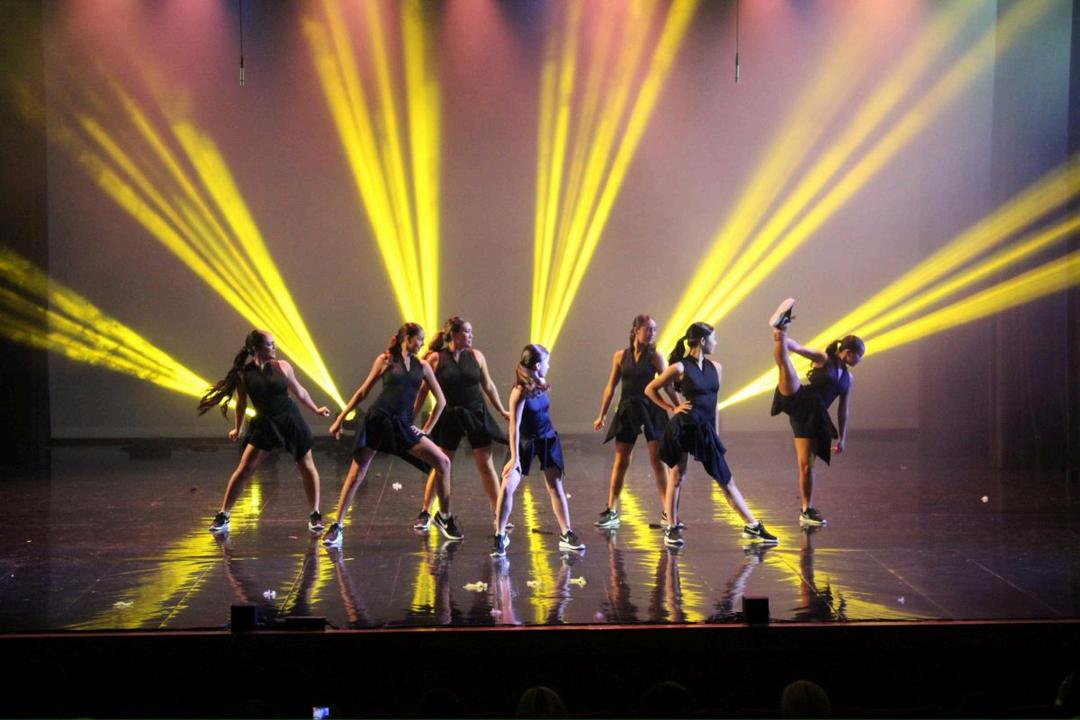
old. Her love for dance never faded, inspiring her to attend a performing arts high school. Zinov knew that she always wanted dance to be part of her future, which led her to obtain a degree in dance education.
Some notable moments of Zinov’s dance life include dancing for the National Basketball Association’s (NBA) Utah Jazz for four years and performing in plays in Utah and Hawaii.
Zinov said, “My passion for the performing arts continues to grow, and
now more than ever, I feel a strong desire to give back.”
As a way of giving back, Zinov said, “I hope to inspire others to pursue their dreams with the same level of determination and enthusiasm. I believe wholeheartedly that no dream is too big or out of reach. With the right mindset, perseverance and belief in oneself, anything is possible.”
Zinov has some advice for aspiring dancers. She believes that performing is the most rewarding experience in life.
Every moment becomes a learning experience that will help dancers to grow.
“Stay dedicated to your craft, put your heart into every movement and trust in your ability to improve each day,” she said.
“Above all, never lose sight of the joy and passion that brought you t d i th fi t


Chloe Wolfert, Staff Reporter •
Feb. 10, 2025
Mission trips have long been a way to serve communities in need while offering volunteers meaningful experiences. But for junior Alice Rose Tupou-Tuipulotu, they are more than just a temporary act of service they are a lifelong commitment to making a difference.
After traveling to the impoverished city of Bagong Silang in the Philippines with Sacred Hearts Academy in January, Tupou-Tuipulotu returned home determined to keep supporting the community she had grown close to. She helped lead a fundraiser
through the Academy’s annual Junior Fast and raised over $1,200 for the community.
“This experience has reshaped the way I see mission work, not as a onetime event but as a lifelong calling to help others in any way I can,” she said.
“The people we met in Bagong Silang welcomed us with open hearts, despite having so little…and this donation is a way to show that we haven’t forgotten them.”
In recent years, mission work has shifted toward
sustainability and community empowerment, focusing on long-term solutions rather than reliance on outside aid.
Before the COVID-19 pandemic, nearly two million American volunteers participated in mission trips, but the pandemic caused a sharp decline, raising questions about their relevance today. Are mission trips still a meaningful way to serve, or have they become outdated in an era of remote aid and digital activism?
Mission trips have existed for centuries, dating back to the time of Jesus, and have evolved significantly
Continued on Page 16
Junior Alice Tupou-Tuipulotu assists with a box of donations for children and their mothers at the local community center. In addition to Academy apparel, the group donated diapers.
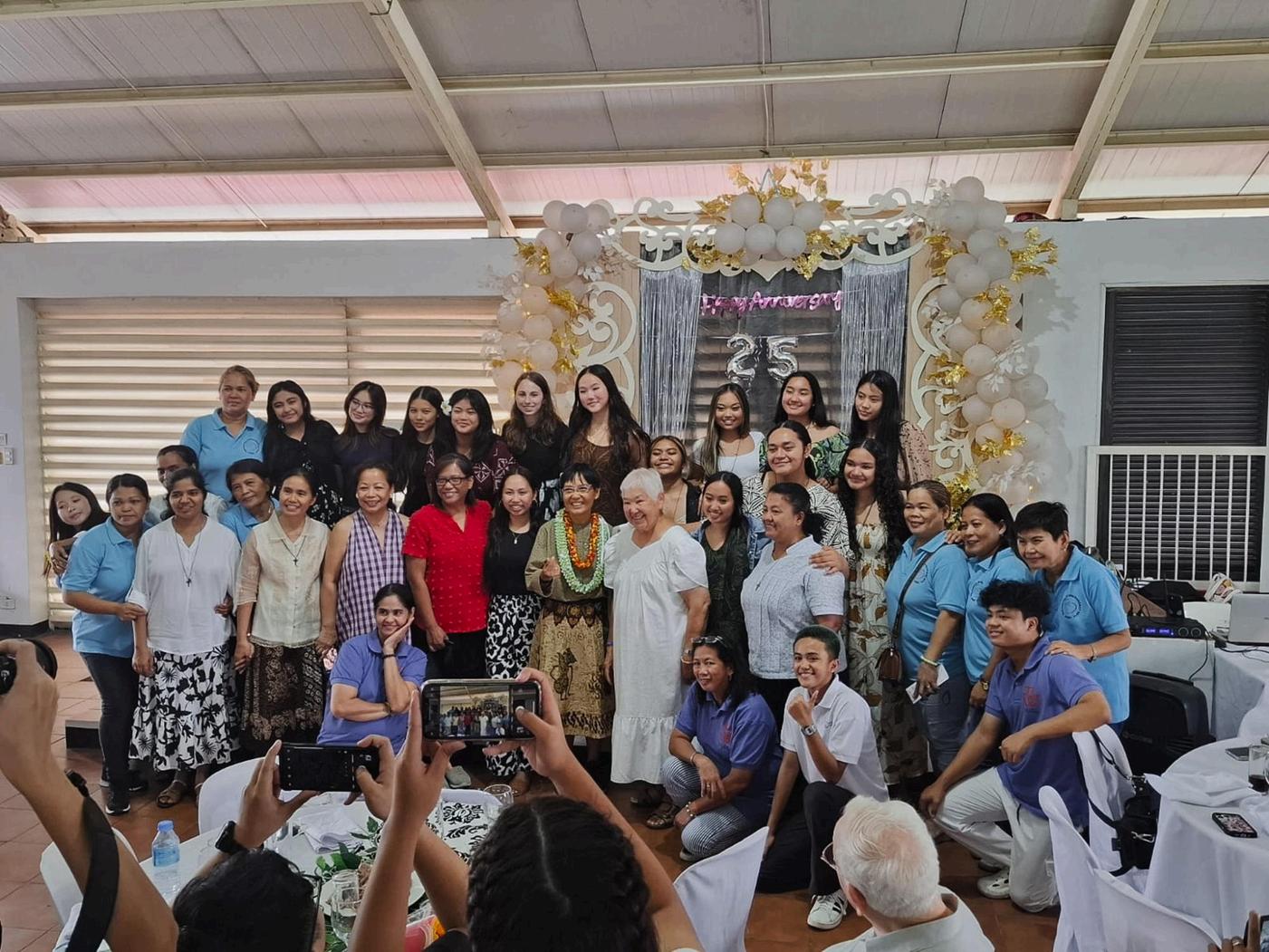

over the years. Early mission work focused on religious conversion and church building, later expanding to include medical aid, education and infrastructure development. By the mid-20th century, service blended faith-centered outreach with practical support, and by the 1960s, volunteers took on roles like providing medical care and building schools.

“People don’t realize it, but in the very final blessing of the mass, where father says, ‘Go in peace to love and serve the Lord, the mass has ended,’ we say, thanks be to God. We’re basically being sent off on a mission,” Asuncion said.

Through these changes, churches, schools and service organizations continue to promote mission trips as a way to inspire faith and global citizenship. For Academy volunteers, the experience reinforced that mission work is about more than just providing aid; it is about building lasting relationships. Volunteers supported communities in need by tutoring children, distributing food and performing as a gesture of entertainment and connection.
Leilani Asuncion, a theology teacher and a chaperone on the trip, reflected on the significance of these experiences.
Beyond providing aid, mission trips create awareness of a world outside one’s own community. Each trip offers a unique lesson, shaping volunteers’ perspectives in ways they never expected.
Sophomore Leonor
Cassandra Louise Dimla described the eye-opening experience working with a small community in the city of Bagong Silang, which is home to more than 200,000 people.
“It just inspired me, like oh, this happens in life, you know? It opened my mind to these types of lives in other places,” Dimla said, reflecting on the vivid contrast of living conditions. “We never took whatever they gave us or whatever happened on the
trip for granted, and we were thankful for all of it.”
While mission trips can be transformative, they also present significant challenges. Coordinating with local organizations, adapting to cultural differences and navigating unexpected logistical issues require resilience and flexibility. Volunteers say they must be adaptable and culturally aware to ensure they contribute to sustainable development.
Critics of short-term mission trips argue that resources spent on travel and accommodations could be more effectively used to fund local initiatives directly.
Concerns have been raised about the potential for such trips to create dependency on foreign aid, undermining local efforts and failing to address systemic issues. Additionally, critics say that the transient nature of these missions can
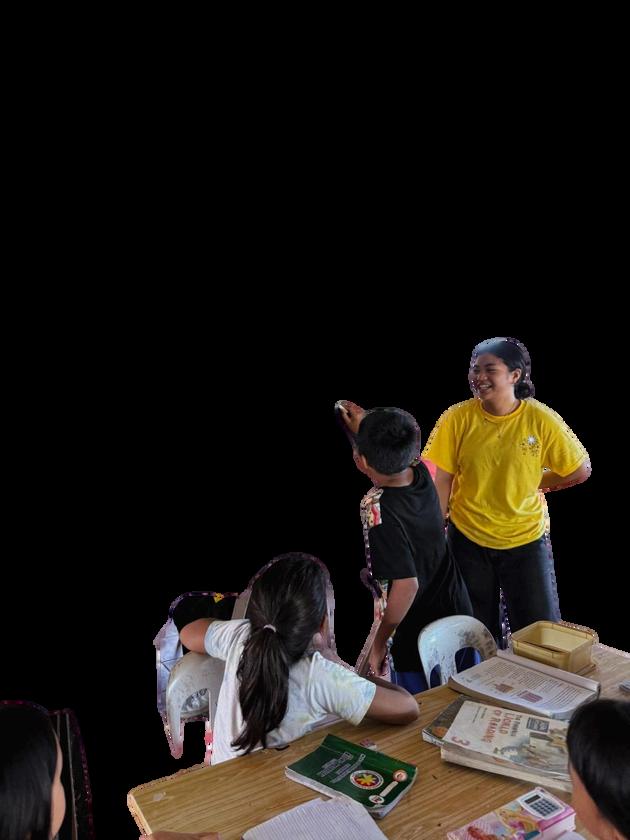
Continued on Page 17

Academy volunteers take a

sensitivity. For instance, the Academy group adjusted its travel schedule to attend the Jubilee of Sister Patricia, an Indonesian sister known for her dedication to serving communities in the Philippines. This unexpected opportunity allowed students to engage deeply with the Bagong Silang community, reinforcing the values of their mission work.
Reflecting on the experience, Asuncion noted, “I think going on a mission is expecting the unexpected. We all
thought we were going to leave from Hawaii on Jan. 2, but instead, we had to leave on Jan. 1. However, if we left on Jan. 2 and came back to Hawaii on the 10th, like we originally planned, we would not have been able to see Sister’s Jubilee.”
Similarly, Dimla shared, “We didn’t know what activities we were going to do. When I was the first one to be leading the games and activities for the kids, I was scared. I didn’t know if it was even gonna work out. I wasn’t confident at all.”
Both agreed that these
experiences highlight the importance of flexibility and cultural immersion in mission work.
With advancements in technology and global communication, the structure of mission trips is evolving.
Digital tools enable remote support, through financial assistance or virtual engagement. Many organizations are shifting towards sustainable development, focusing on long-term solutions rather
than short-term aid. Virtual volunteerism, such as online tutoring, fundraising and social media awareness campaigns, allow volunteers to contribute meaningfully even without being physically present.
However, mission organizations stress that ethical considerations must be taken into account.
The Global Mission Board emphasizes the importance of working alongside local communities rather than imposing outside solutions.
Continued on Page 18
Culturally sensitive training and pre-trip education are becoming essential components of modern mission preparation.
The Academy’s volunteers emphasize that there is still profound value in inperson mission work. The ability to build deep, personal relationships and witness the realities of life in different communities firsthand offers an irreplaceable experience that digital tools cannot fully replicate.

Sometimes, people think that mission trips are just about delivering aid, but they’re really about relationships,” she said. “It’s about showing people that they are seen, heard and loved.”
have to be told to volunteer; you don’t have to realize what a mission truly is, but if you have that opportunity to serve elsewhere, take it.”
Reporter Ofa Tuiafitu '25 shares more about the Academy’s mission trip. Scan or click the QR code to find out

Dimla reflected on how the trip changed her perspective. “Ever since I went there, I just wanted to be closer to them,” she said. “I’ve never felt this way before. It just made me more empathetic and made me think about other people what they could be going through.”
Tupou-Tuipulotu emphasizes that mission work is about more than providing aid; it’s about building relationships.
“It’s not always easy.
The necessity of mission trips continue to be debated in a rapidly changing world. However, for those who participate, the experience imprints a lasting impact that can be difficult to put into words.
“It’s frustrating trying to explain what we went through to people who take us lightly,” Dimla said. “I think it’s better off if we just hope they’ll experience it (because) at least we know that we did something to help people, or try to make a change,” Dimla said.
As mission trips adapt to modern realities, volunteers say their essence remains unchanged: a desire to serve.
“Everyone’s on a mission,” Asuncion said. “You don’t



Ann Li, Staff Reporter • Feb. 21, 2025
As the clock struck midnight last New Year’s Eve in Aliamanu, Hawaii, the moment was not marked by celebration but rather by devastation. A powerful fireworks explosion claimed four lives and left more than 20 others injured. Six victims were flown to Arizona for treatment of severe injuries, but sadly, two did
fireworks hold deep cultural significance in Hawaii’s celebrations, the Aliamanu tragedy underscores the urgent need to balance tradition with safety through stricter enforcement and alternative ways to celebrate. Fireworks have been part
spirits and welcome good fortune. Yet, as time has passed, the risks associated with fireworks have become impossible to ignore. In response to growing safety concerns, Hawaii enacted a partial fireworks ban in January 2011, placing restrictions on certain pyrotechnics.
These restrictions make
with a license and may be used during designated times.
Despite these restrictions, illegal fireworks continue to flood Hawaii, often smuggled in from out of state or sold on the black markets. Unfortunately, even as the state has stepped up its efforts, enforcement remains a
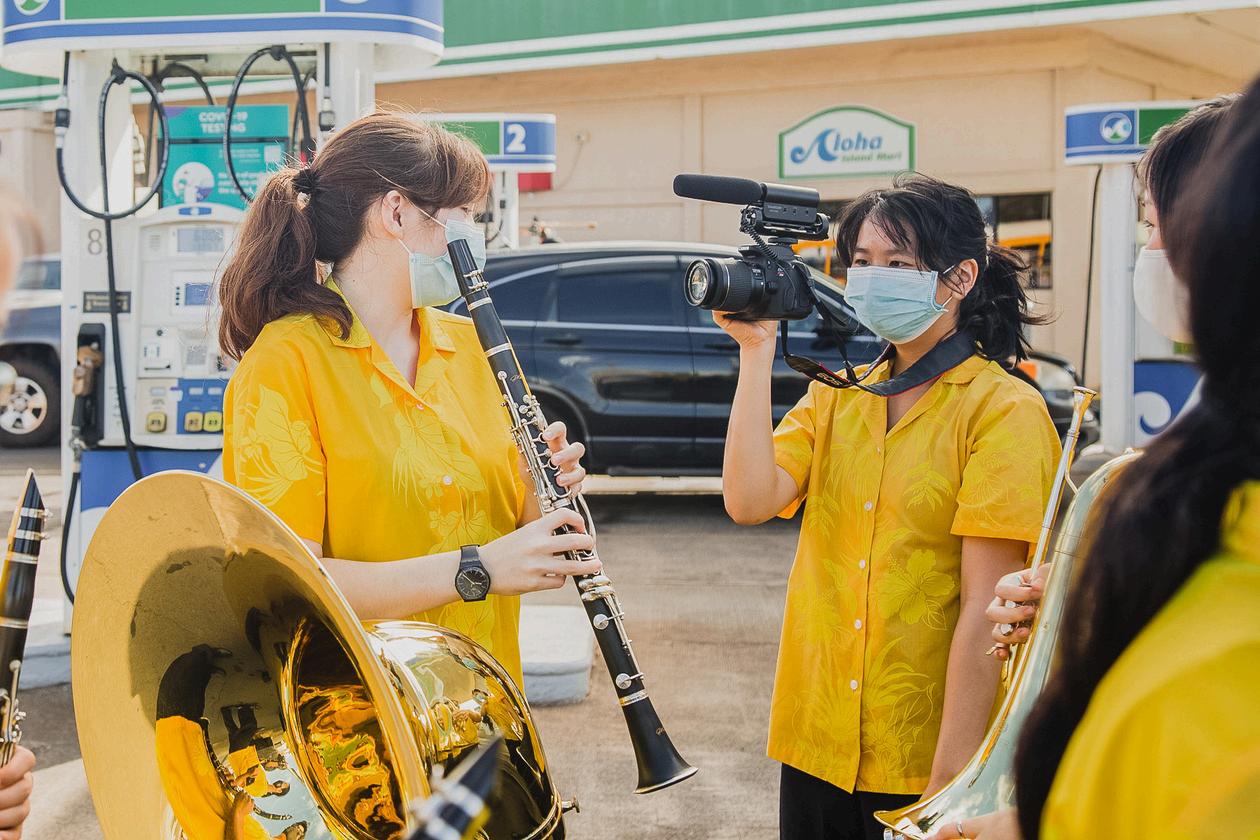

227,000 pounds of illegal fireworks, but confiscations dropped sharply from 93.5 tons in 2023 to 24 tons in 2024, raising concerns about enforcement effectiveness. This reduction suggests that smugglers are adapting their tactics to evade detection, potentially by using more sophisticated methods or smaller, less detectable shipments. Most illegal fireworks enter Hawaii through ports, hidden within legitimate cargo shipments.
Hawaii’s per-capita injury rate during the New Year’s holiday 4.1 per 100,000 residents exceeds the national average of 2.9 per 100,000, according to U.S. Consumer Product Safety Commission data.
This was tragically underscored by the Aliamanu explosion, where authorities seized more than 500 pounds of illegal fireworks and arrested 10 individuals in connection with the incident, charging
them with reckless endangerment and endangering the welfare of a minor, according to a report by KHON2. Beyond statistics, the personal impact of illegal fireworks is deeply felt by the community.
Whitney Grohowski, a teacher at Sacred Hearts Academy, reflected on the tragedy, saying, “The tragedy was heartbreaking to hear about. Sending prayers for strength, endurance and healing for all those recovering and deepest condolences for those who passed.”
Grohowski, who teaches Criminal Justice, used the firework incident in class to explain the difference between de jure (what the law states) and de facto (what happens in reality).
"We all know that these fireworks are illegal to purchase, distribute or use (de jure), but the fact is that people had access to them and were able to use

Nationwide data, from 2008 to 2023, showing the number of injuries related to fireworks.
them because they continue to be a popular part of our New Year's celebrations (de facto)," she said.
Sophomore Taylor Kaahanui knew some of the affected families. She shared her thoughts: “Current laws aren’t enough. While there are rules, they’re often not enforced well.”
These concerns align with broader issues that
highlight the severe risks of illegal fireworks. Public safety is a major issue, as illegal fireworks have already caused numerous injuries, deaths and property damage, affecting a growing number of families. Beyond safety, fireworks also have an environmental impact. Their loud explosions cause noise pollution, which disrupt wildlife and affect the ecosystem by reducing
Continued on Page 21
biodiversity. Fireworks mostly contain plastic casings and nonbiodegradable materials, which will cause long-term pollution to the environment; the chemical elements produced by fireworks may pollute the drinking water, which will affect us eventually.
Moreover, fireworksrelated incidents put a strain on emergency services, overwhelming hospitals with burn patients and stretching fire departments thin due to the increase in fire emergencies during the holidays.
However, these issues are preventable if we increase funding for law enforcement agencies to combat smuggling and distribution while strengthening fireworks laws through higher fines and stricter penalties.
Given these ongoing concerns, many question whether Hawaii’s existing laws are effective enough. Current laws are not strong enough compared to other states and countries.
As an example, Massachusetts completely bans private citizens from using fireworks, while states like New York have enacted stricter limits on what can be legally sold and used. Some California localities impose robust fines and jail terms for violations. Internationally, Australia imposes fines that can reach tens of thousands of dollars and substantial jail time; several European nations have moved toward prohibiting consumer fireworks altogether or mandating that only licensed professionals conduct displays.
Additionally, Hawaii’s rate of successful prosecutions for fireworks violations is low. A Civil Beat analysis shows 94% of citations were dropped, and the 15 successful cases generated only $1,000 in fines. Current laws require expert witnesses or forensic evidence to establish that pyrotechnics were used, making it difficult to prosecute offenders after fireworks have been set off.

Every Friday, the Hilton Hawaiian Village Waikiki
Resort hosts a free fireworks show. A public fireworks show is a possible solution to mitigate the use of illegal fireworks in Hawaii. The Hilton show was also canceled the week after the Aliamanu fireworks tragedy out of respect for the victims and their families.
should fully ban fireworks and enforce harsher penalties to deter violations.
Illegal Fireworks Task Force and providing them with better technology and funding.
Many believe the government
While stronger enforcement is crucial, it should not be the only solution. Authorities can also take proactive measures, such as arresting individuals before they set off illegal fireworks or intercepting shipments before they reach Hawaii. This can be achieved by increasing staff for the
On the other hand, others feel that fireworks should not be banned, especially for immigrant communities that have celebrated with them for generations. They worry that such restrictions could threaten their cultural identity. While these concerns are valid, it is important to recognize that
The aftermath of an explosion at an Aliamanu home. The incident, caused by illegal fireworks, killed several people and injured dozens more just after New Year’s Eve.
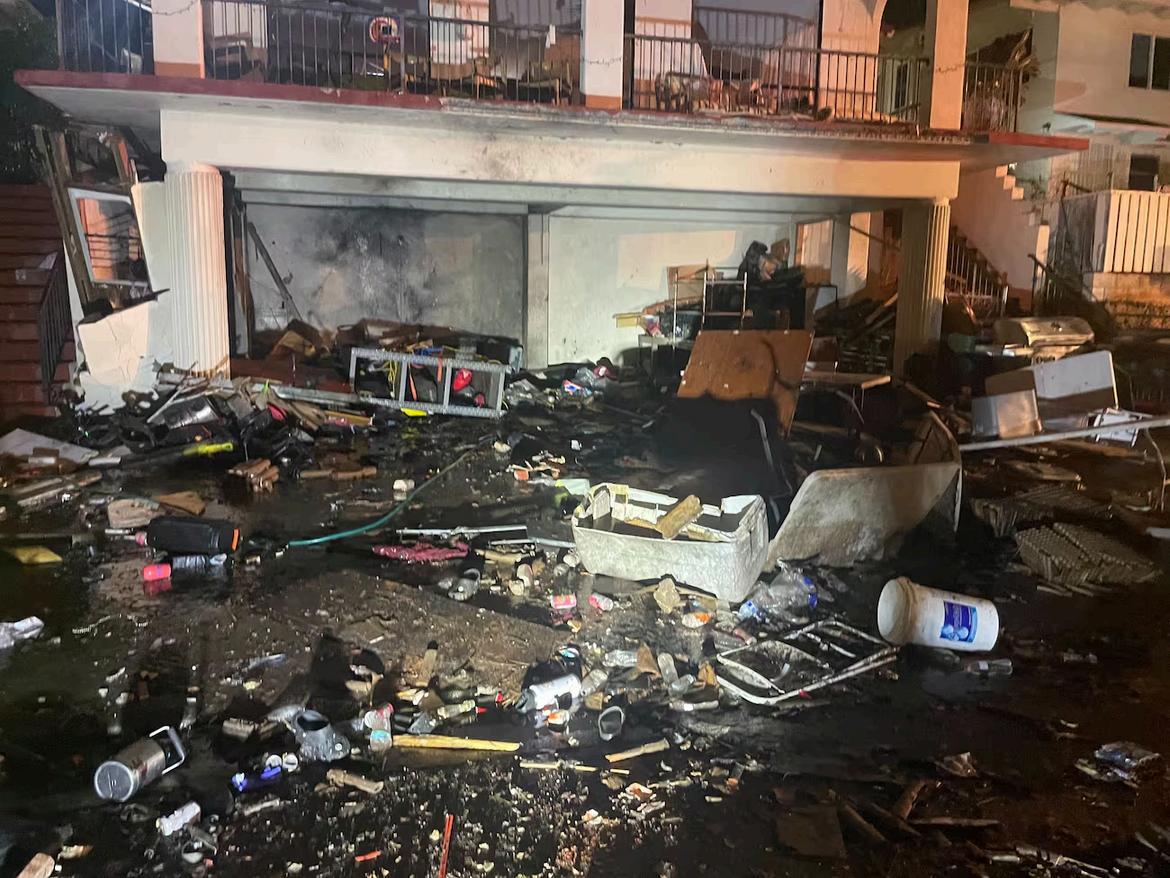
not every tradition should be preserved at the expense of safety. In fact, the root cause of illegal fireworks is high demand, which often drives people to bypass the law. As economist John Maynard Keynes’ theory suggests, demand creates its own supply–when there’s a strong demand for fireworks, people will find ways to obtain them, whether legally or illegally. If we want to stop the use of illegal fireworks and save lives, we must first change people’s mindsets. We can do this through initiatives that build awareness of the dangers of illegal fireworks use.
While cultural traditions involving fireworks are deeply important, and enforcing a ban presents challenges, it is possible to address both concerns without compromising safety. Authorities can use advanced technology, such as scanners, to detect illegal fireworks and enlist help from explosivessniffing dogs to prevent smuggling.
Kaahanui suggested that instead of an outright ban, safer alternatives should be considered.
“Encouraging (people to view)
professional displays could help reduce risks of fireworks,” she said.
This perspective highlights the importance of finding a balance between tradition and safety, ensuring that celebrations can continue without putting lives and property at risk.
Additionally, establishing regulated community fireworks displays will allow people to continue celebrating their heritage in a safe, controlled setting. Creative alternatives offer a modern twist on traditional fireworks displays,
providing a safer and more eco-friendly option to experience the spectacle and joy they bring.
Ultimately, addressing the root causes of illegal fireworks such as high demand and smuggling while supporting law enforcement will create a safer environment while preserving the joy and pride that fireworks bring. Now is the time for lawmakers to act decisively by implementing stricter regulations and community-driven solutions to ensure celebrations bring joy, not tragedy.
As I danced on the large stage under the blinding lights of Japan’s Pia Arena, the adrenaline rushed through my body. I felt the beat of the drums playing behind me. My mind went blank, but my body flowed effortlessly, and I felt free on stage. Every motion, every emotion and every step with the group blended together in perfect harmony, as if the stories we were dancing about were coming to life through us.
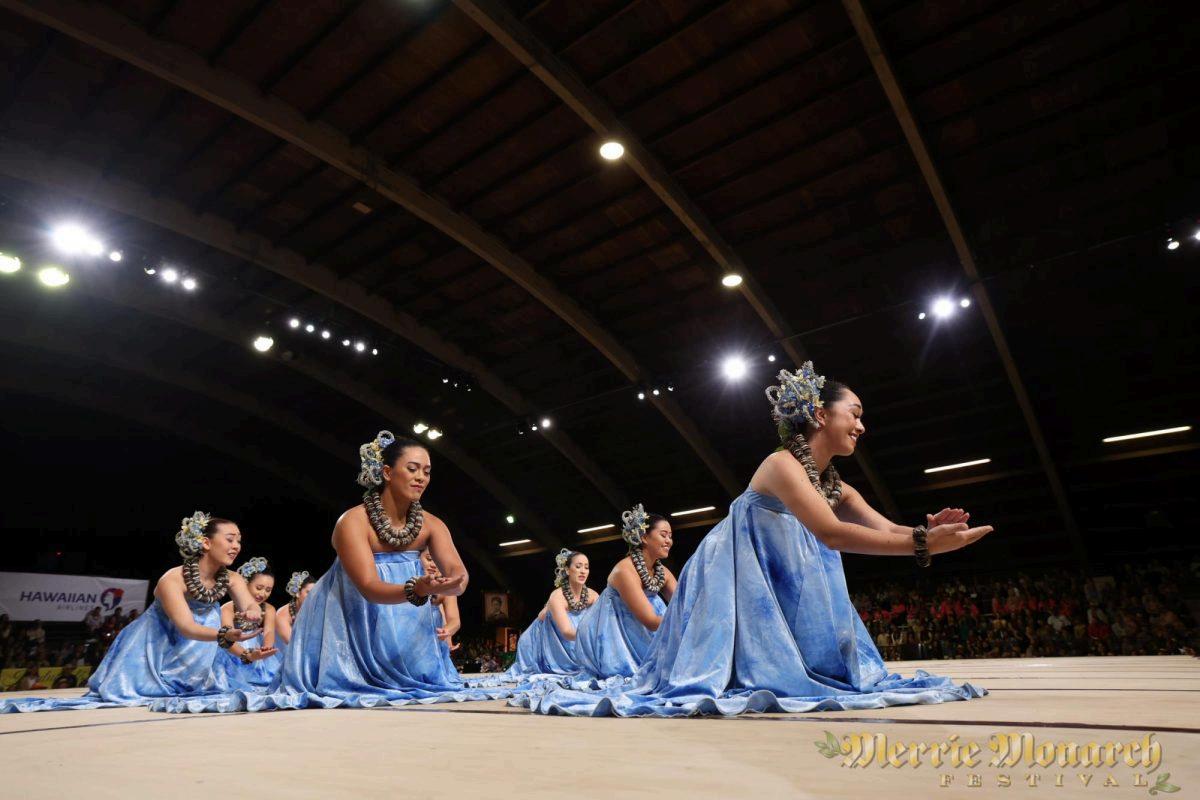
Performing in front of over a thousand people at the
Nā Po’okela event felt surreal like reliving the Merrie Monarch Festival all over again. The energy and excitement of the crowd were reminiscent of the festival’s atmosphere, where hālau from across

the islands come together to showcase their unique styles and perpetuate Hawaiian heritage. Held annually on the Island of Hawaiʻi, the Merrie Monarch Festival is a prestigious, week-long event featuring a three-day competition. The festival celebrates Hawaiian culture through hula and dance, much like the sense of pride I felt performing in front of such an audience.
This time, however, I was far from the Island of Hawaiʻi. I found myself in Japan, where our hālau had been invited to perform at its own hula festival. The connection between the two events became even clearer when I realized that, although the stages
were different, the emotions and significance of sharing our culture were the same. The pride we felt as we performed for an audience so far from home mirrored the pride we experience in Hilo, showcasing Hawaiian traditions in a foreign land.
When the dance ended, a wave of relief rushed over me as we walked off the stage in unison, receiving a standing ovation. It was an indescribable feeling, knowing that others truly enjoyed our performance and appreciated our culture.
This moment was the culmination of months of preparation, but the journey to get there was equally meaningful.
It all began with a suitcase full of many lei, costumes and a heart of aloha ready to share our culture with others. I woke up at 5 a.m. full of excitement, ready to journey through another country with some of my closest friends. The plane ride was as long as ever but just so happened to be one of the best flights I have ever been on. The food was delicious, and the seats were surprisingly comfortable. As I stepped outside the airport, I was greeted by the humid, warm air of Narita, Japan. It was as if I never left home.
Hula serves as a cultural expression for Hawaiians, telling stories from the past, showcasing our
Continued on Page 24
(From left to right) Myself, Naiya Kuwaye-Naehu and Kaleihiwa Dunlap hang out backstage in Japan, just moments after performing for over a thousand people for the Nā Po’okela 2024 event.
values and honoring our ancestors. It’s an art form that combines movements, chanting, music and rhythm something that requires dedication, patience and skill. As I shared hula with our Japanese audience, I could see firsthand how deeply they valued our culture. Their respect and admiration were evident, reinforcing the power of cultural exchange through dance.
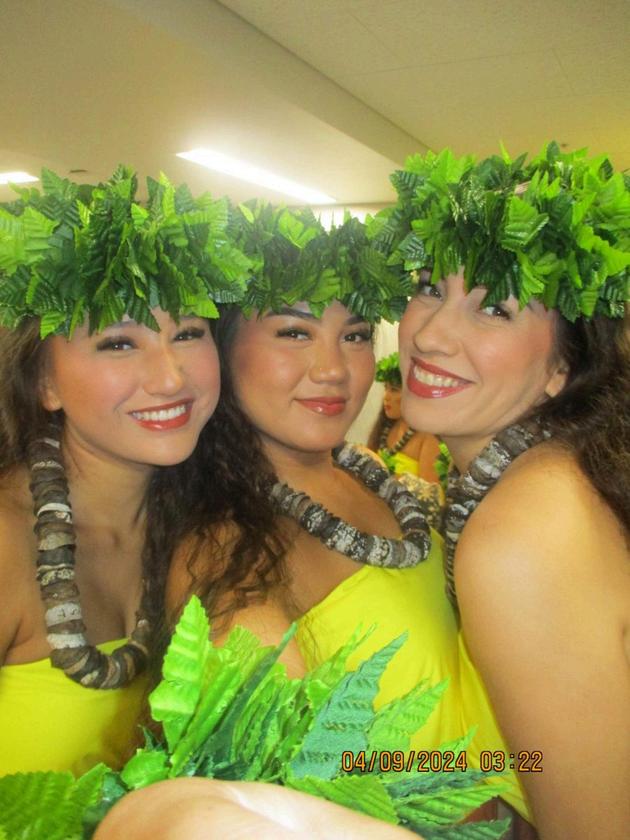
emotional and spiritual connection that hula holds and allowing the audience to feel that connection with us.
Culture plays a pivotal role in Hawaii–shaping who we are and what we believe in.
Taking from this experience in Japan, it goes way beyond just that. The
Japanese people’s deep appreciation for Hawaiian culture, particularly hula, is something truly remarkable. They go great lengths to make sure that they are getting the right knowledge from the right people. Our traveling to Japan to showcase hula in the way that we did for this festival was significant. It allowed the Japanese audience to experience Hawaiian culture in a way that is not always accessible to them. This was a moment of cultural exchange that went beyond simply performing on stage. It was about sharing the
“Watching YouTube videos or third-party accounts of hula is not giving you the full experience, and I think hula, although is a physical representation of our culture, it is also very emotional,” a fellow hālau member Momi Tolentino said. “To be able to have us in person there to showcase our culture to the Japanese people really allows them to also feel those emotions and to connect to the stories we are portraying through our hula.”
While we were in Japan to share our hula, we also embraced the opportunity to experience their culture. We were fortunate to eat their traditional types of foods and try new things that we don’t have back home.
As I headed home, I carried with me all the lessons, knowledge and unforgettable experiences from this trip. From the intricate rhythms of the
dance to the deep cultural insights I’ve gained, this journey had been a perfect blend of tradition, connection and personal growth. It was about learning from another culture while also teaching them about our own. I am grateful for the new friendships formed and the opportunity to make new ones. These experiences will stay with me, continuing to inspire and guide my hula journey as I move forward.
Through this experience, I have gained a deeper understanding of the importance of cultural exchange and the power it has to bring people together from different places and backgrounds. Whether through the dances we performed or the new foods we tried, every movement has enhanced my appreciation for both Hawaiian and Japanese cultures. The trip reminded me that, no matter where we go, our shared humanity and respect for tradition can unite us in the most meaningful ways.
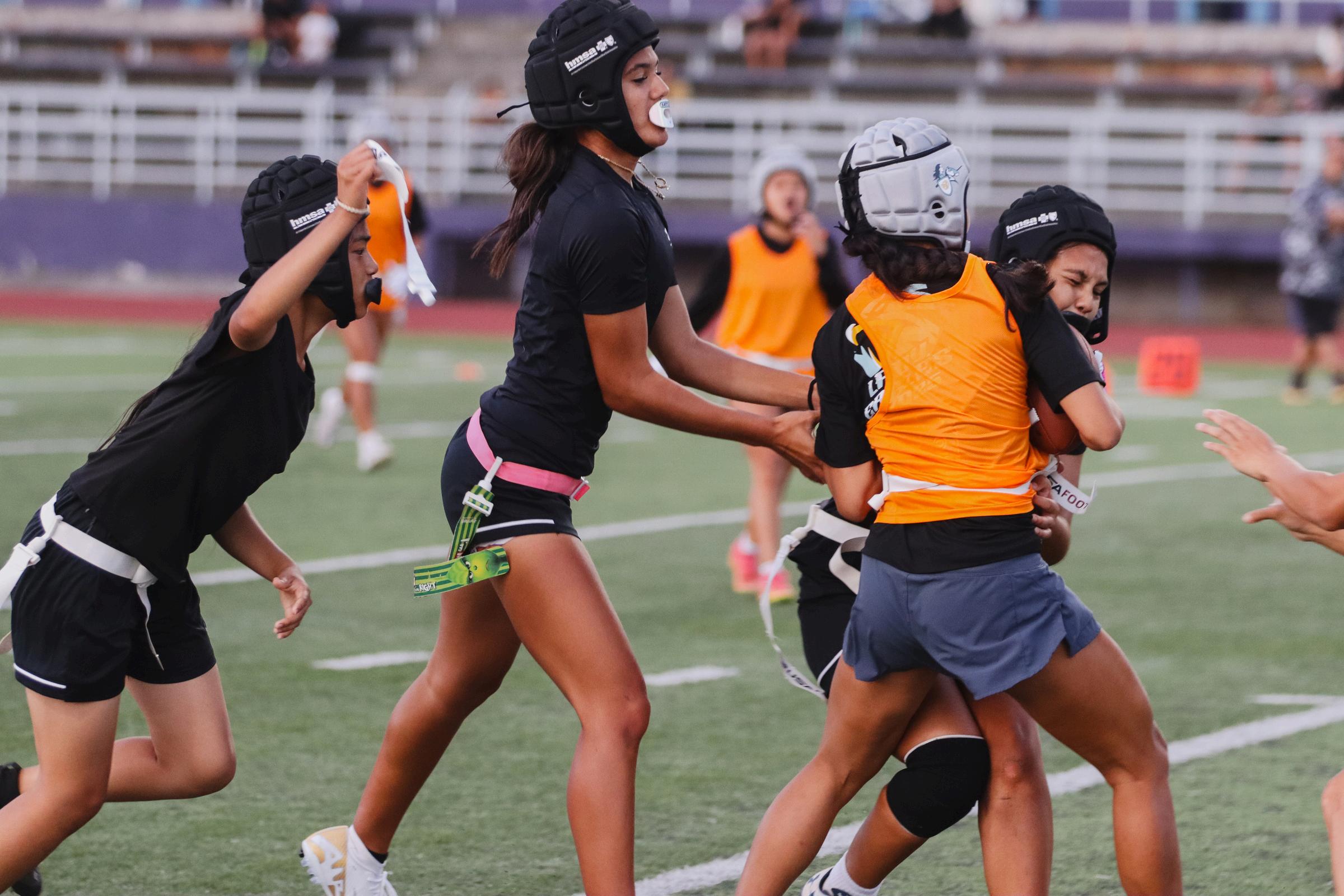
Mahina Monsarrat-Ohelo, Sports Editor • March 1, 2025
A long silence fell over the field as Sacred Hearts Academy freshman Kuuleialohilani Martin adjusts her stance, her heart pounding with anticipation. She and her teammates represented the school’s inaugural flag football team in a recent scrimmage, a milestone made possible by the sport’s recent sanctioning for Hawaii high schools. This moment was more than just a game; it was a historic step for female athletes in the state.
For Martin, the opportunity to play flag football is a dream come true.
“Ever since I was little, I was surrounded by people who loved football talking about it and playing it, but I never had a chance to play myself,” said Martin, whose father is a former Saint Louis School (SLS) football player and encouraged her to try out for the team. Both of her younger brothers play football.
Hawaii is the 12th state to sanction flag football as a high school sport, marking a significant advancement in gender equity in athletics. The official season kicked off a few weeks ago, with seven schools from the Interscholastic League of Honolulu (ILH) participating.
This season, athletes from the Academy teamed up with Hawaii Baptist Academy (HBA).
Overcoming hurdles to recognition
While flag football has long been played recreationally, its journey to official high school recognition was met with obstacles. Many athletic programs initially hesitated, fearing the sport would divert resources from established programs. Budget constraints also posed challenges.
Continued on Page 26
“There were many challenges while sanctioning girls’ flag football as a sport,” Academy Athletic Director Ryan Hogue said. “There are finance and logistical issues, including paying for uniforms, equipment, transportation, coaches’ salaries and finding fields for practices and games.”
Over recent years, the push to sanction girls’ flag football gained momentum through youth leagues, pilot programs and community advocacy. As interest in the sport grew, major organizations, including the National Football League (NFL), provided funding and visibility, while local sponsors like Hawaii Dental Service (HDS) contributed essential gear, such as mouth guards and flags.
Gender equity advocates and Title IX, a law prohibiting gender-based discrimination in any federally-funded program, also played a role in emphasizing the importance of equal opportunities for female athletes.
According to the National Federation of State High School Associations (NFHS), participation in girls’ flag football has increased by nearly 40% over the past decade. The introduction of girls’ flag football at the high school level has the potential to significantly impact women’s sports, according to Head Coach Koy Omo.
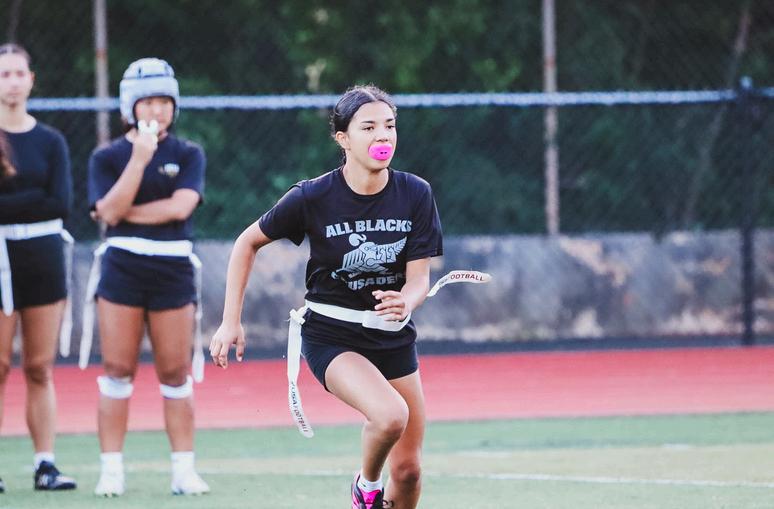
Academy sophomore Joy Gora-Aina works on drills during practice. She says she looks forward to representing not only her school but also girls in this inaugural season of flag football.
“(Playing flag football) makes me feel good about myself,” she said. “People are starting to take a chance on girls, (and) this shows that girls can do the same things that boys can do– but better.”
for female athletes.
Community support and training initiatives
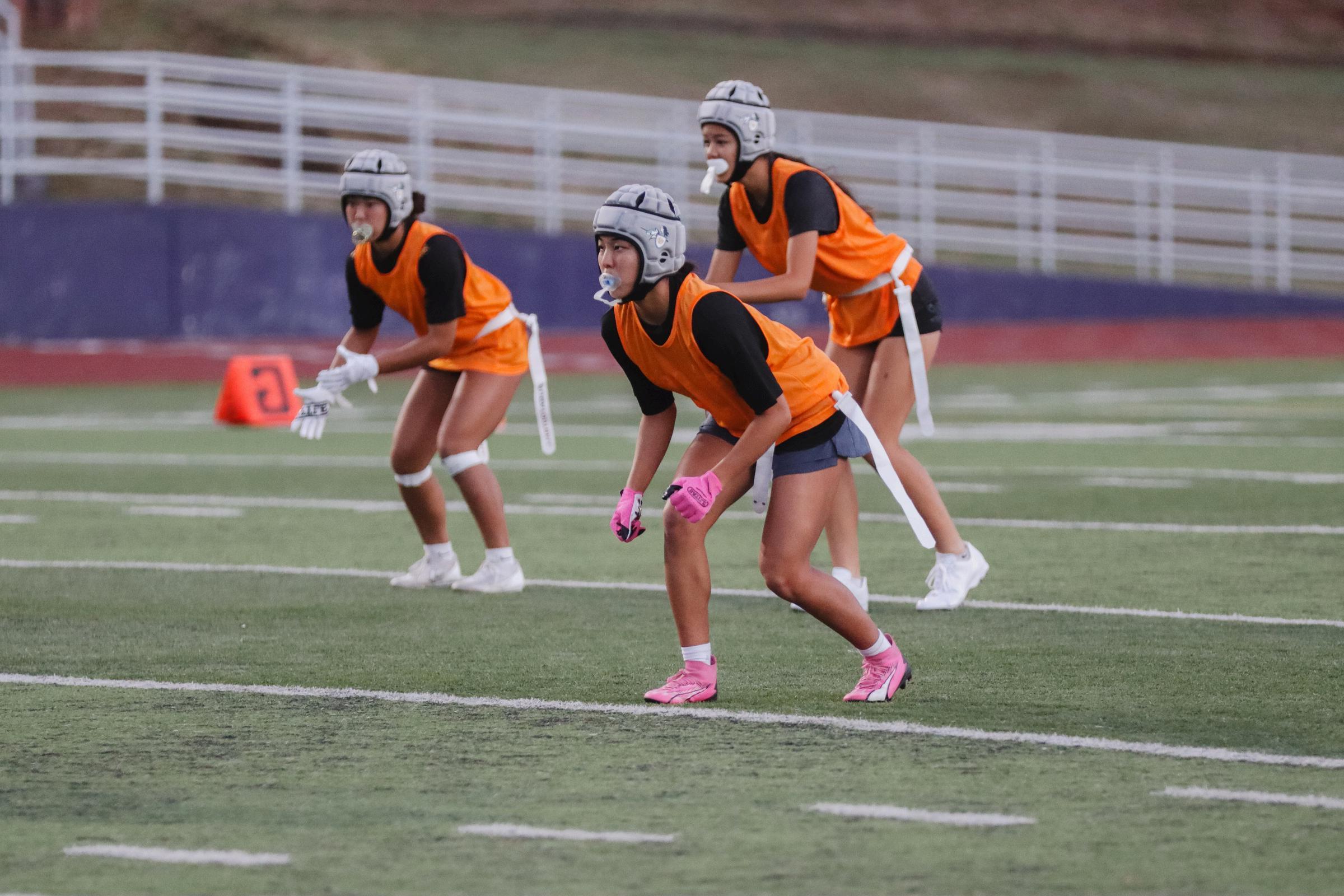

Academy sophomore Joy Gora-Aina, who plays soccer and paddles, comes from an athletic family and trains alongside her brother during football season. Though she has never played flag football before, she said her athletic background gives her a strong foundation.
In 2020, the National Association of Intercollegiate Athletics (NAIA) officially recognized flag football as a championship sport, and several NAIA schools now offer athletic scholarships. Additionally, the NFL has collaborated with the NAIA and the Women’s Flag Football Coalition to expand college-level opportunities
The enthusiasm for girls’ flag football has been evident in communitydriven initiatives. The Seattle Seahawks and Hawaii High School Athletic Association (HHSAA) recently hosted a free training camp designed to help female athletes prepare for the season.
Each day, the event drew more than 150 participants from across the state.
Academy senior and flag football athlete Peyton Bennett participated. She was particularly inspired by her father, Michael Bennett, a former Seattle Seahawks defensive end. He shared his expertise as a coach at the event.
“My football upbringing has definitely positively affected my enthusiasm for the sport,” she said. “My dad was very excited when I told him that I was trying out, and he’s been helping me a lot and is very supportive, coming to practices and watching my film.”
Bennett added that she hopes to follow in his footsteps, using his guidance to develop her skills and make her mark in the sport.
high school sports. Flag football is a fast-paced game in which two teams of seven players attempt to score by advancing the football to the end zone.
Unlike tackle football, players must reach their side of the field without having their flags secured around their waist pulled by an opponent. The game requires speed, agility and strategic execution on both offense and defense.
“Flag football is like a fast break in basketball because it requires players to throw and catch while making quick defensive decisions against a moving opponent,” Omo said.
Omo, who has been coaching the Academy and HBA through their inaugural season, emphasizes the demanding nature of the sport.
For the Academy athletes, the learning curve has been steep.
“Football is very fast paced, and no sport I played was similar,”
Bennett said. “It’s a lot of adaptation, but a good mindset and continuous effort is all you need to overcome it.”
Martin echoed the sentiment, noting that while she is still mastering the sport’s technical aspects, she remains determined.
“I am excited to contribute to this historic step for Hawaii, but I’m even prouder of these students, who will carry this experience with them for the rest of their lives,” Omo said.
“We are the future and the first in a new and upcoming sport,” Bennett said. “I’m so grateful to be a part of this team, as I learn something everyday. It’s not just about the sport, but the lessons we learn from it.”
Their first game will be against Kamehameha Kapalama on March 18.
Understanding the mechanics of the game is crucial, players say, especially as flag football requires a different skill set than other traditional
“Playing flag football will be one of the hardest experiences of their lives, but in the end, they will become stronger students and contributors to their community and the state of Hawaii.”
“My throwing and catching technique still needs work, but I’ve been practicing with my dad and learning from my mistakes,” she said. “My biggest challenge is understanding the formation lines and plays. It will take time, but I know I’ll get it down.”
As the sport continues to grow, many see it as more than just a game; it’s a movement shaping the future of women’s athletics.
Bennett runs to catch a pass during a scrimmage last weekend.
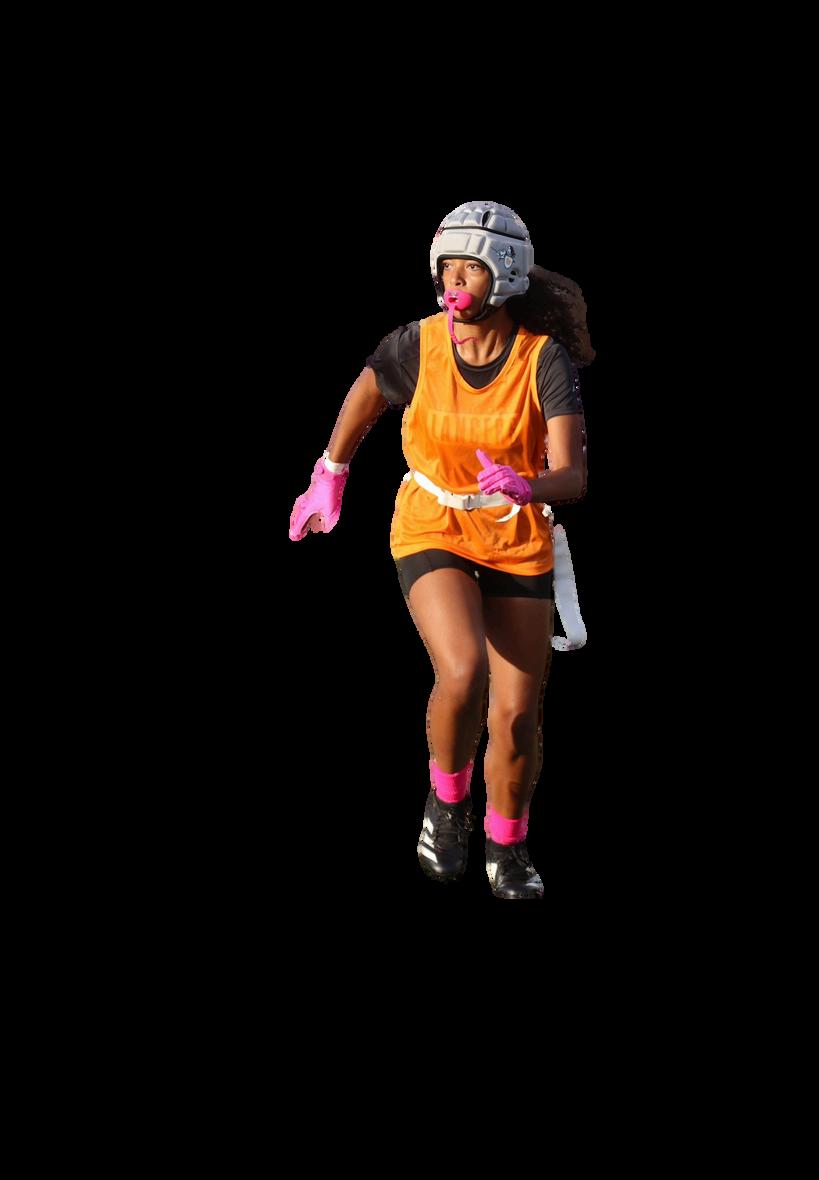
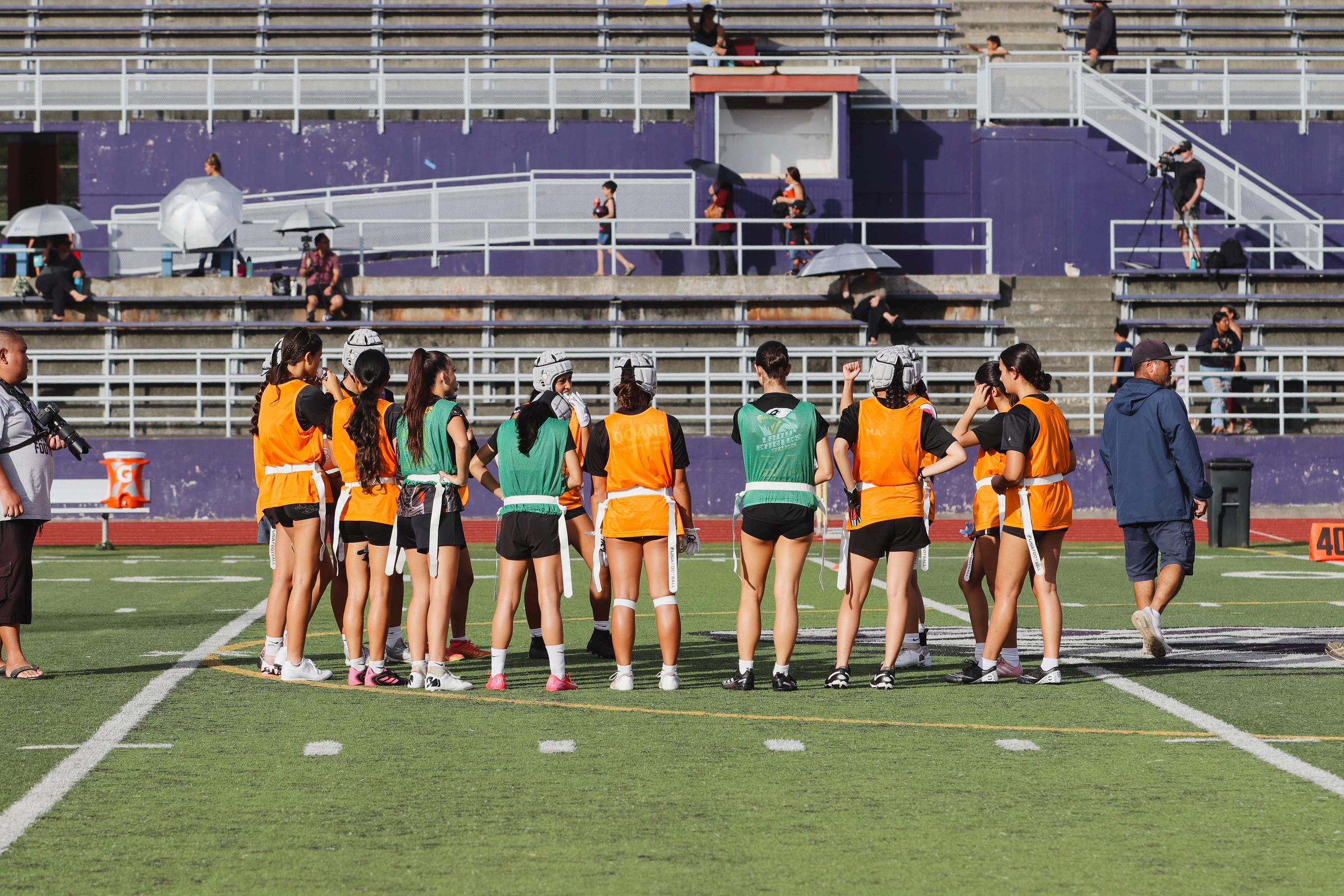
• February 7, 2025
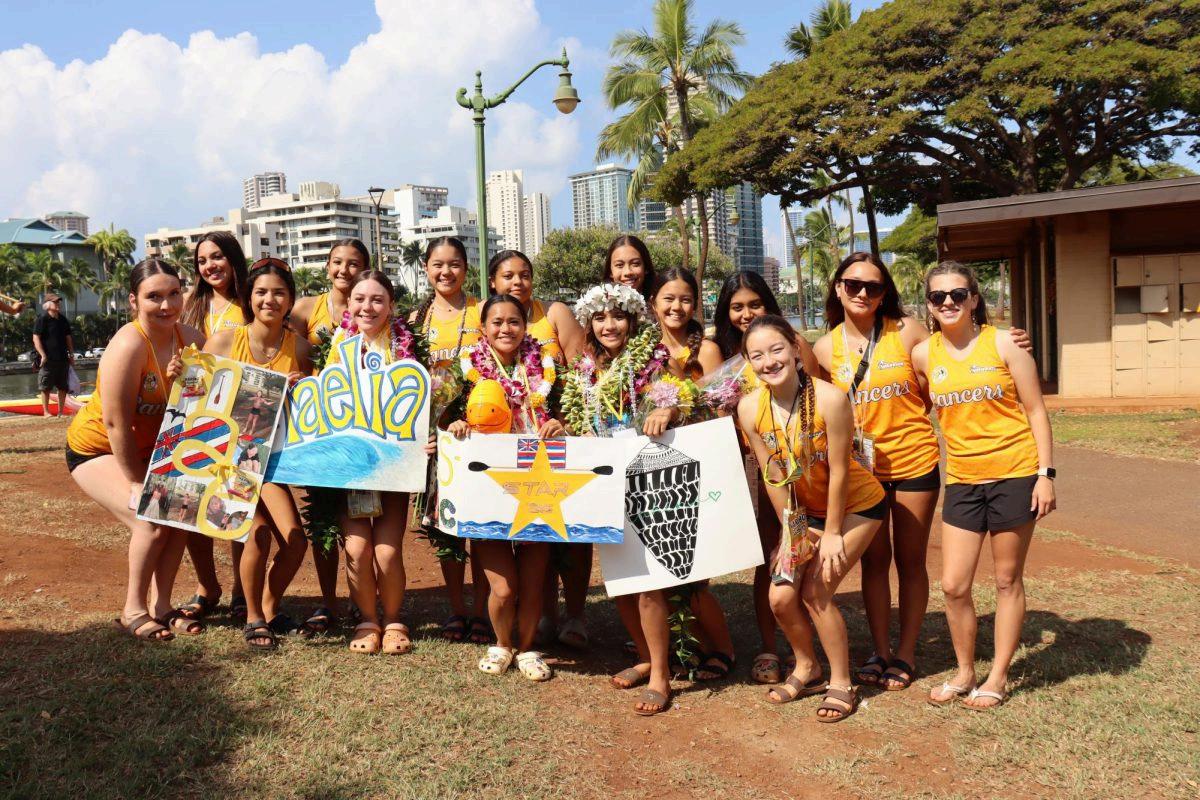
The journey of a senior paddler is one of dedication, resilience and camaraderie, through countless early morning practices and intense races. As these athletes reach the final stretch of their high school paddling careers, they leave behind a legacy of dedication and teamwork. Every stroke in the water reflects years of hard work and an unbreakable bond with their crewmates. This photo essay celebrates the seniors of Sacred Hearts Academy’s paddling team, honoring their commitment to the sport and the memories they have created.
This is the girls JV1 crew representing the Academy. Seat 1 is freshman Miko Cvilikas, competing in her first year of paddling for the school. Seat 2 is sophomore Leilani Freitas, returning for her second season. Seat 3 is sophomore Taylor Minami, also in her second year. Seat 4 is freshman Anne Holt, making her paddling debut. Seat 5 is freshman Jai Bjorkholm, also in her first year. Seat 6 is sophomore Joy Gora-Aina, joining the team for her first season.
Continued on Page 29

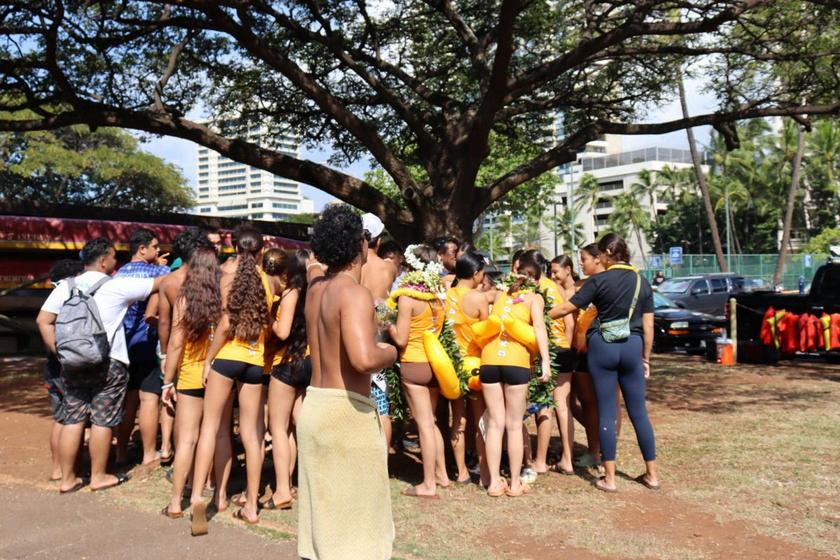
The Saint Louis School (SLS) Crusaders JV 2 race to the finish. Freshman Brock Faufata, in Seat 1, has been paddling for about 10 years but is competing for the school for the first time. Seat 2 is sophomore Dylan Basug, also new to the team. Junior Matt Uong holds Seat 3 in his first season. Freshman Cash Texeira and freshman Tysen Luke Ruiz occupy Seats 4 and 5, both in their first year paddling for SLS. Sophomore Toa-Rai Ellacott rounds out the crew in Seat 6.
Continued on Page 30
Kanalui Canoe Club consists of both Sacred Hearts Academy and Saint Louis School students.
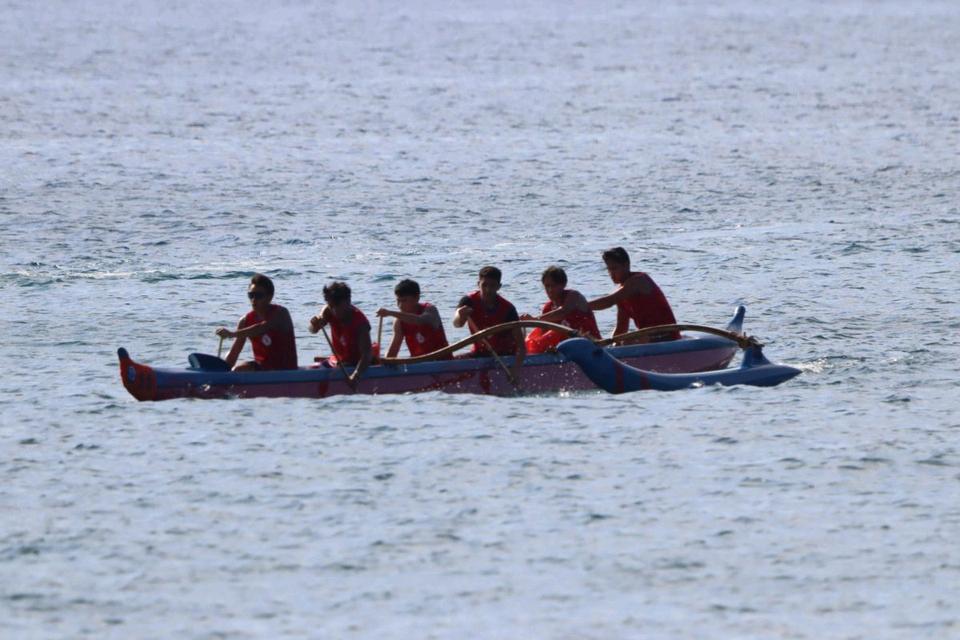
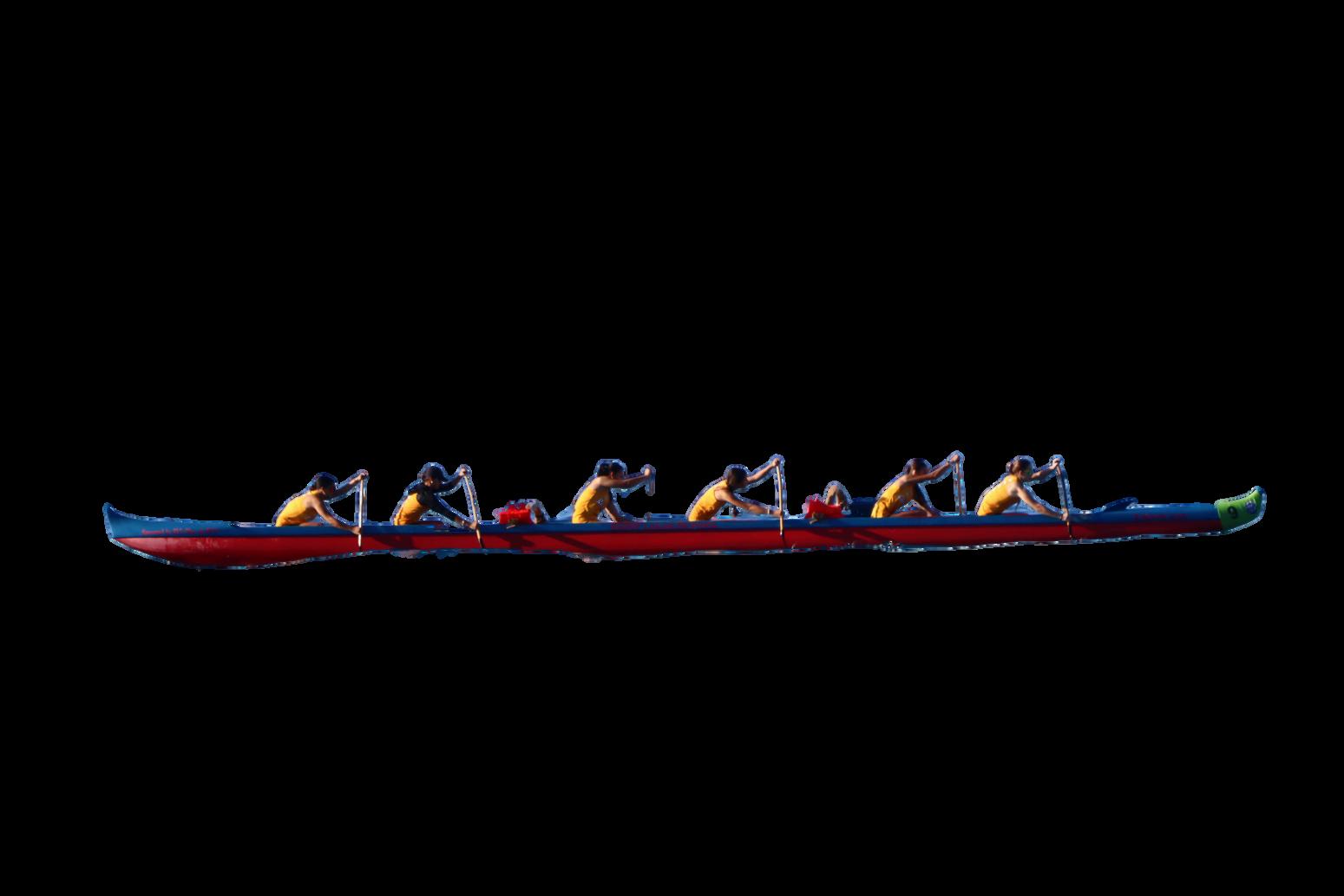
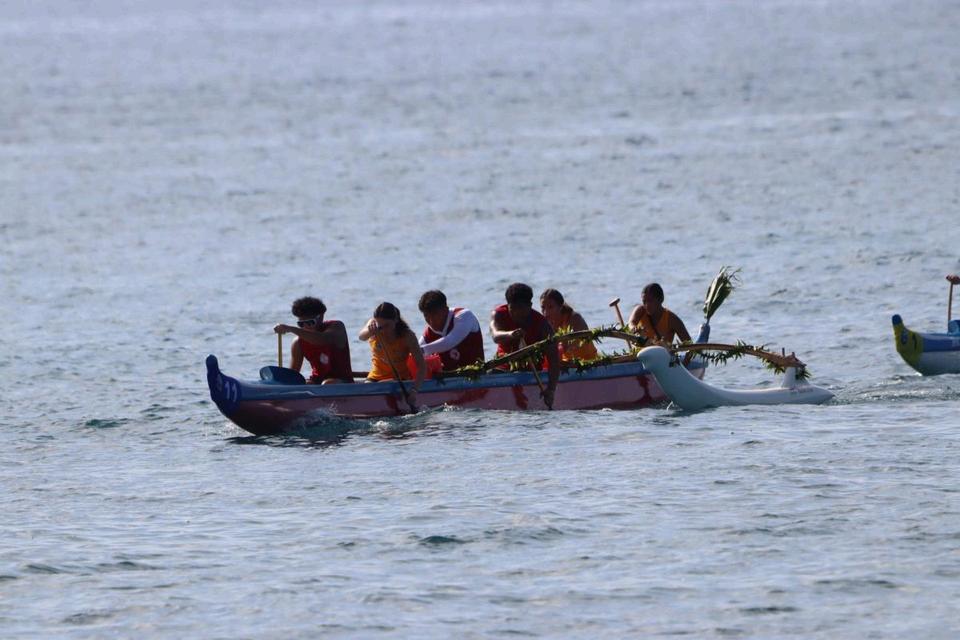
his mixed crew, made up of students from t. Louis School and Sacred Hearts cademy, brings a strong blend of xperience and teamwork to the water. enior Noah Onato leads from Seat 1 in his ird season, followed by senior Maelia homas in Seat 2, paddling for her second ear. Senior Ethan Villamor holds Seat 3 in s third year, while junior Kamuela Sabina akes Seat 4 in his second season. Senior ahina Monsarrat-Ohelo, a four-year eteran, powers through in Seat 5, and senior Starlen Wong rounds out the crew in Seat 6 for her second year.
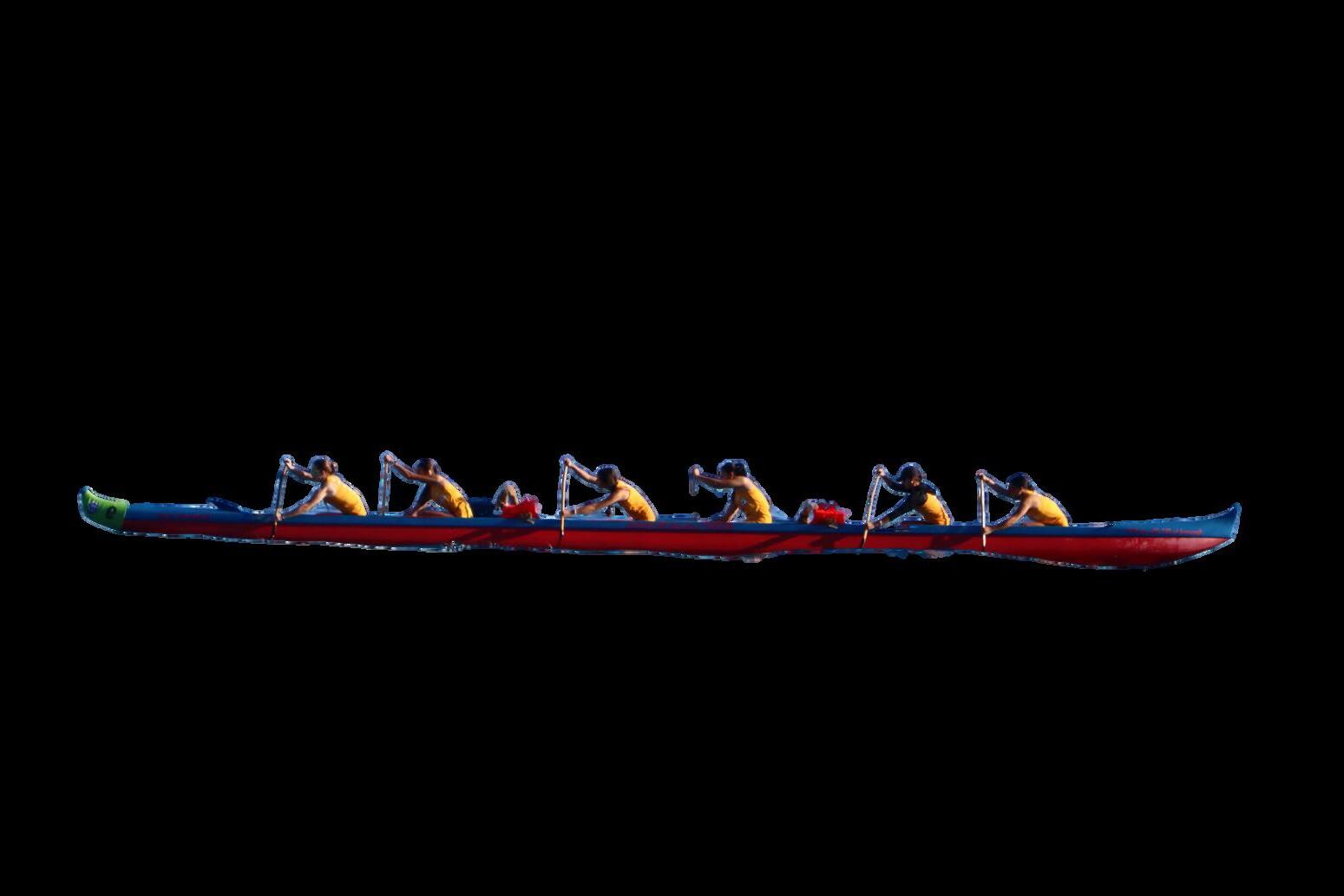
This is the Academy’s JV 2 girls crew. Seat 1 is freshman Aazalea Cordeiro. This is her first year paddling for school. Seat 2 is freshman Rilynn Milczarski. This is her first year paddling for the school. Seat 3 is freshman Anaiah Joseph. This is her first year paddling for the school. Seat 4 is freshman Blake Bennett. This is her first year paddling for school. Seat 5 is freshman Kailey Bristow-Canfield. This is her first year paddling. Seat 6 is junior Tyler Beissel. This is her first year paddling for school. Continued on Page 31
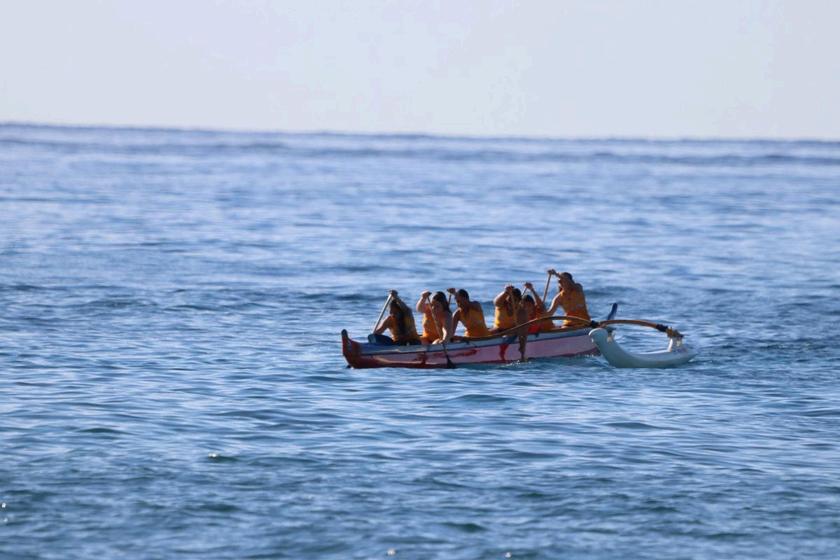
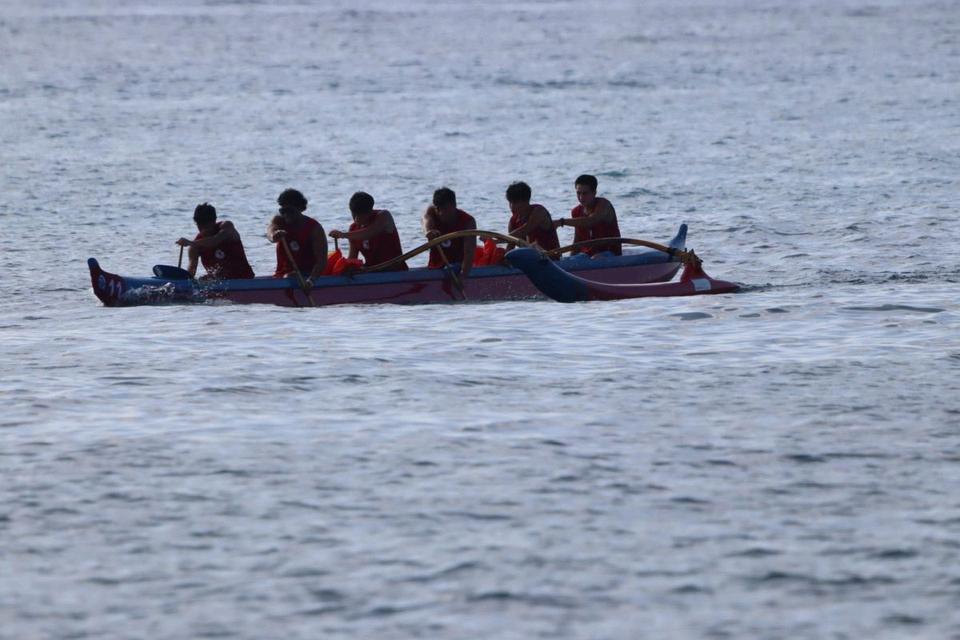

In the editorial cartoon, a young girl hesitates before eating a bowl of cereal labeled 'Cancer Loops.' Floating in the milk, colorful cereal pieces spell out the names of artificial dyes and preservatives, including Red 3, Red 40, Blue 1, BHT, BHA and carrageenan ingredients that have raised health concerns.
Red Dye No. 3 was banned last month due to links to cancer in animal studies, but it will remain in products for another two years before being fully removed (U.S. Food and Drug Administration, 2025). Other additives, such as Red 40 and Yellow 5, are still widely used despite concerns about their effects on children’s behavior (European Food Safety Authority, 2024). Preservatives like BHT and BHA, which help extend shelf life, have also been questioned for their potential health risks (National Institutes of Health, 2023).
While some states have restricted certain additives in school cafeterias, these ingredients remain common in grocery store products. In Europe, many of these dyes have been replaced with natural alternatives (European Food Safety Authority, 2024), but in the U.S., they are still widely used.
The illustration highlights the ongoing debate over food safety and whether more changes should be made to protect consumers, drawing attention to the disconnect between scientific findings, regulatory action and consumer protection.
